The best OLED TVs 2025 for all budgets, as reviewed by our experts
OLED tech means these elite TVs offer incredible contrast and no light bleed. Here are our top picks
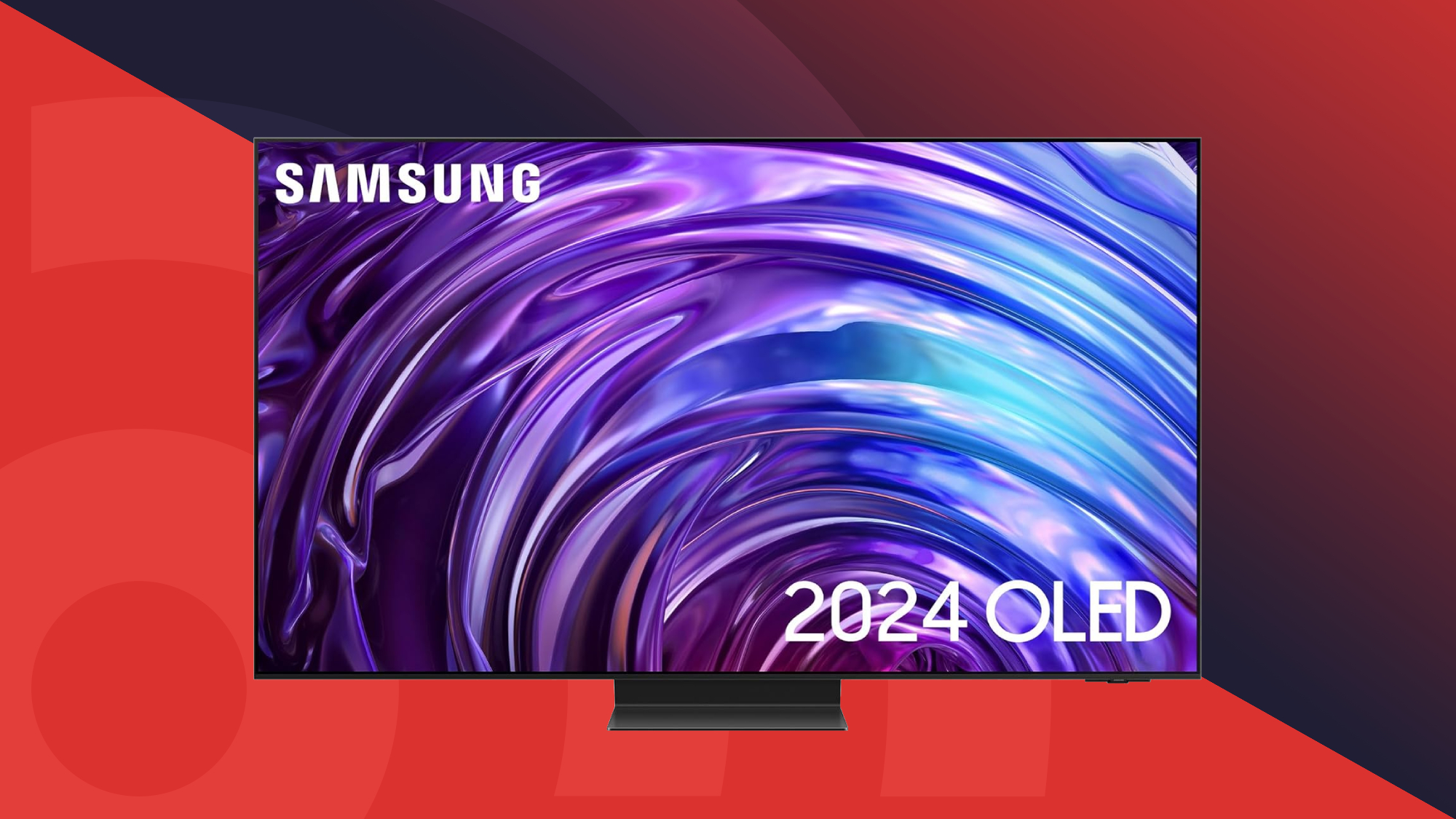
The best OLED TVs on the market today deliver beautiful image quality thanks to the self-lighting pixels that define this technology. What these pixels deliver are stunningly deep black tones and incredibly precise contrast between light and dark areas, in a way that LED or mini-LED TVs simply cannot match. Read our 'What is OLED?' guide for more on why this tech is such a big upgrade, and so sought-after.
The best OLED TVs include a lot of models that rank among the best TVs overall, and come from the biggest TV brands, such as LG and Sony. Even Samsung – a TV company that had rejected OLED for years, has not only joined the party, but has topped our rankings here at times.
Our picks of the best OLED TVs here aren't just ranked from the best-looking to the weakest, because that would put all the most expensive ones at the top. We've tried to be more discerning and helpful, choosing the best options for different price brackets and particular needs, hopefully making it easier to find the one that fits your need best.
Why you can trust TechRadar's choices
We've tested all the TVs here ourselves, and our TV review team is led by Al Griffin, an ISF-trained video calibrator with nearly three decades of AV journalism experience. He's trained our staff writers to balance objective testing of brightness and color accuracy (measured using high-end industry-standard equipment) with the more subjective elements of picture and sound quality – because you can't judge how an image looks to the eye based on scientific measurements alone.
We're judging these TVs based not just on picture quality, but also the features they offer, and how that balances with the price. We provide ratings for each TV in the different sections we judge, as well as providing our measurements, so you can follow our decision making, and decide if your own priorities are slightly different.
Each TV is vouched for by a member of the team, who's written up why they recommended it, as well as going in-depth on what we thought based on our review.
Recent updates
March 17, 2025
Added more information about our team in the introduction. Checked all products against our latest reviews, added more information to our list of other OLED TVs we've tested.
Today's best OLED TVs, as chosen by our reviewers
Why you can trust TechRadar
The best OLED TV for most people
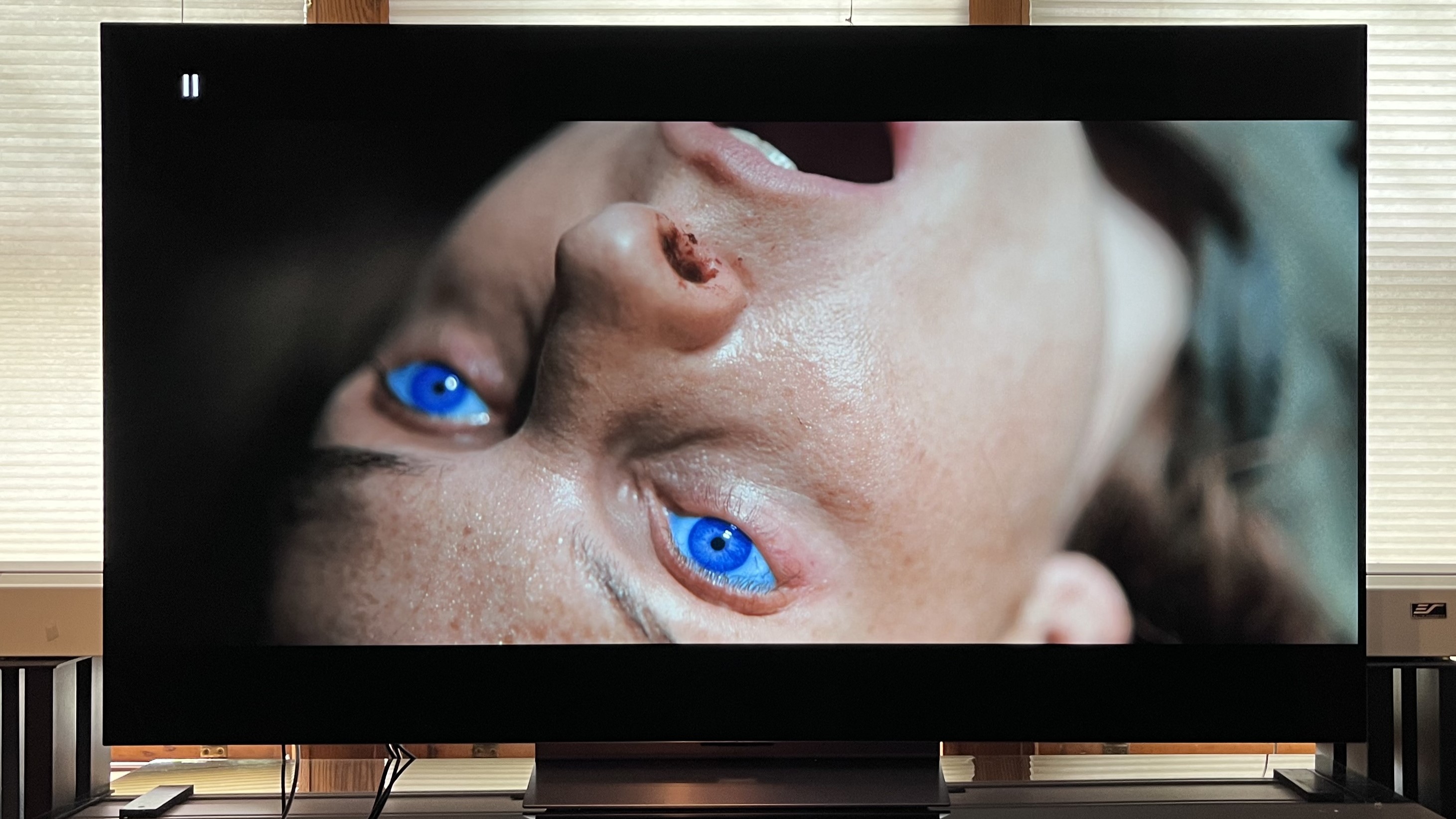

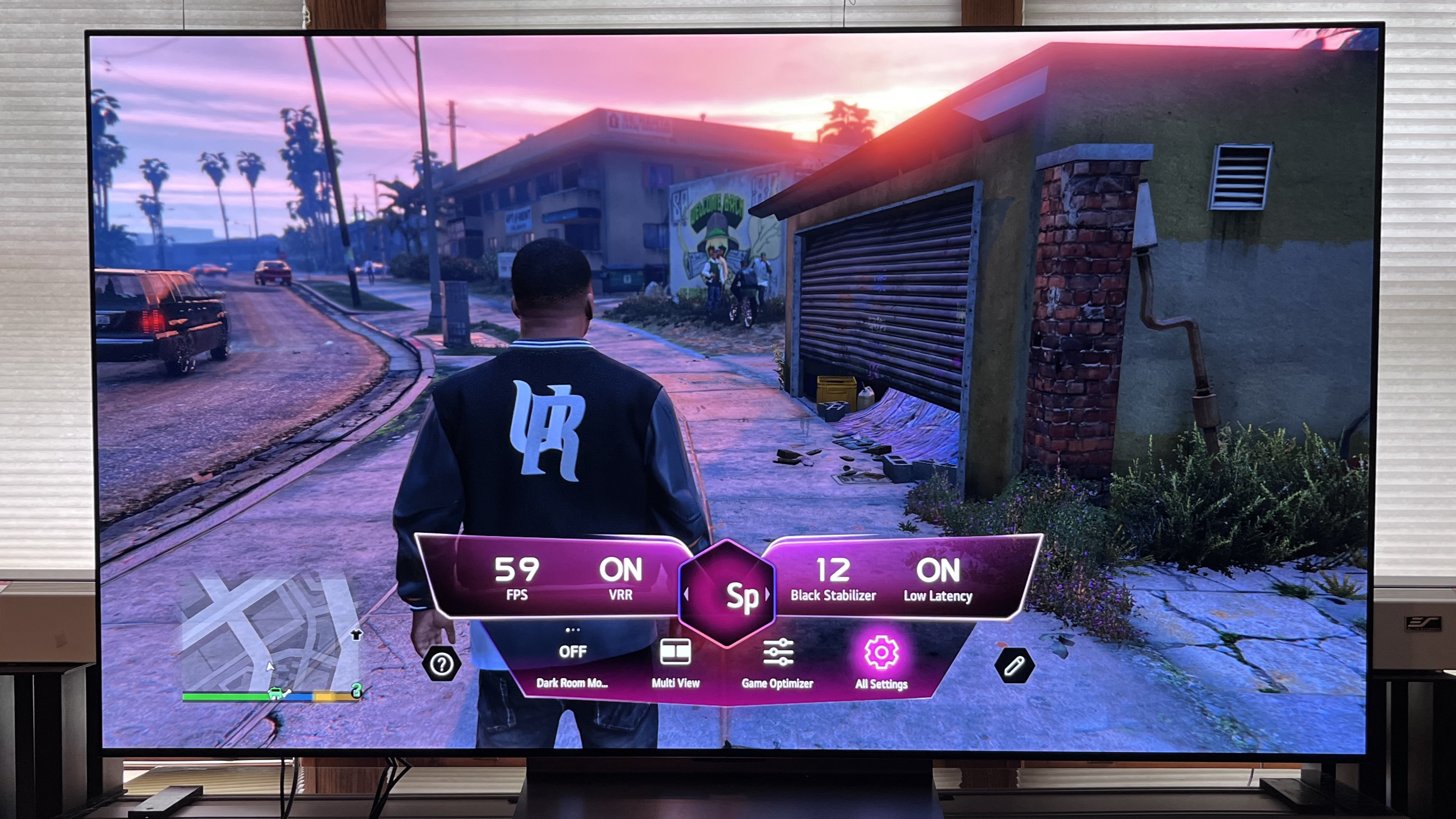
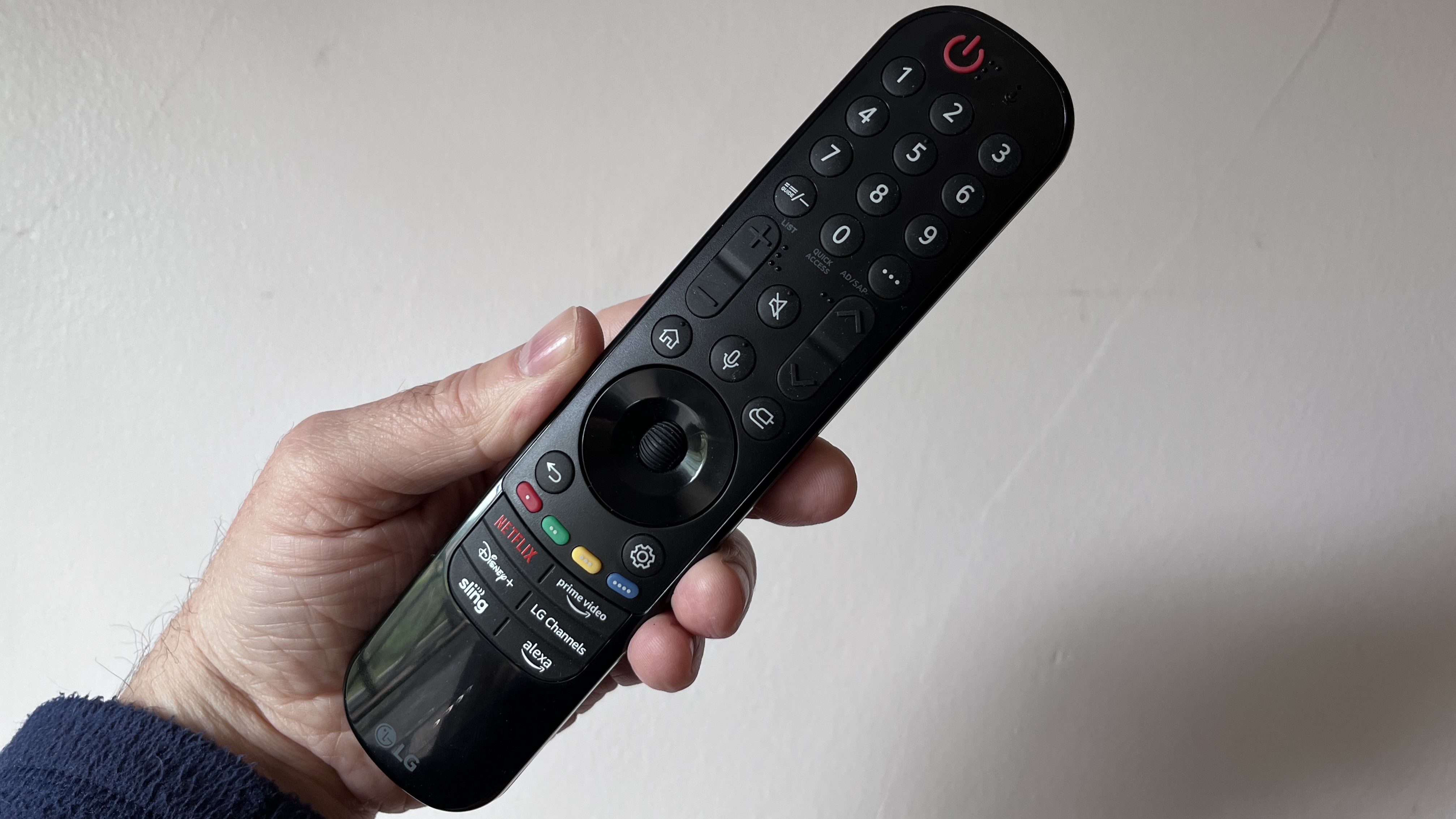
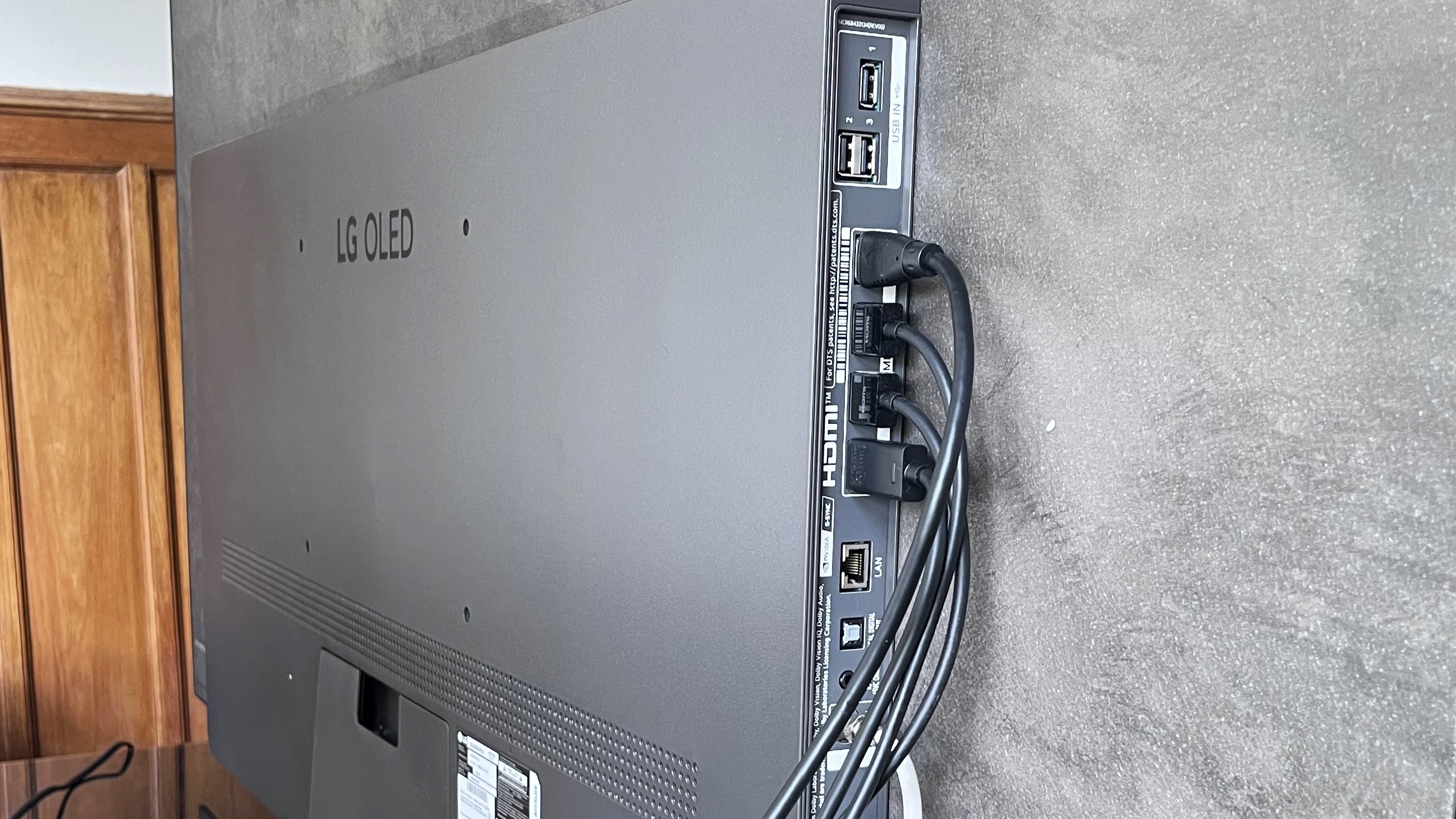
Specifications
Reasons to buy
Reasons to avoid
1-minute summary: I’ve reviewed both the LG C4 OLED TV and its predecessor, the LG C3, and the new model provides a tangible performance upgrade that puts it right at the front of the pack overall. A new processor with a Brightness Booster feature is largely responsible for the picture quality step-up, yielding improved brightness along with better HDR handling and color detail. The C4 series is available in a wide range of sizes – from 42 inches up to 83 inches – which makes it an ideal option for everything from desktop gaming to home theater. I enjoyed watching movies on the C4 greatly, and particularly appreciated its new Dolby Vision Filmmaker Mode picture preset, which makes it super-easy to watch in the most cinematic way, which is what I'll always favor. It’s also a gaming powerhouse, with four HDMI 2.1 ports with 4K 120Hz pass-through and the latest gaming tech. Whether it’s for gaming, movies, or anything else, I found the LG C4 is a great all-purpose TV. When it comes to features and performance vs price, the LG C4 is tough to beat.
Read our full LG C4 review

Reasons to buy
✅ You want a versatile OLED TV: With a vivid, detailed picture, great gaming features and an array of sizes, the C4 covers a lot of bases.
✅ You want an ideal TV for movies: With improved contrast and detail and a new Dolby Vision Filmmaker Mode, the C4 is perfect for movies.
✅ You want a great gaming TV: The C4's impressive picture extends to games, and its four HDMI 2.1 ports have a suite of features for console and PC gaming.
Reasons to avoid
❌ You need the best built-in audio: The C4's audio doesn't live up to the same level of its picture quality – the Samsung S95D, LG G4 and Panasonic Z95A are better.
❌ You want the brightest OLED available: While the C4 is much brighter than LG B4, the more premium Samsung S95D and LG G4 offers higher brightness still.
❌ You want the least expensive OLED: LG's new B4 OLED TV doesn't come in as many sizes, and isn't as good overall, but it's available at a lower price than the C4.
In-depth analysis

We measured the LG C4’s peak HDR brightness at 1,065 nits – a substantial boost over last year’s C3. This brightness increase helps to bring out the full range of detail in 4K movies with HDR and also makes colors look "startingly vivid", as we said in our review. OLED TVs generally excel at delivering deep and detailed shadows, and the C4 more than holds its own in that regard. The picture on OLED TVs also looks uniform over a wide viewing angle, and that quality will benefit larger C4 screen sizes when watching with a large group.

The LG C4 can upmix basic movie and TV soundtracks for a virtual 9.1.2-channel Dolby Atmos presentation – but still only from a limited set of speakers. In our review, we found dialogue on the C4 to be clear and that there was also a good degree of spaciousness when the TV’s AI Sound Pro mode was active. Bass is constrained, making a soundbar a recommended option. If you do go that route, the C4 has several features designed to work specifically with LG soundbars, including Wow Orchestra, which combines the TV’s built-in audio with the soundbar’s speakers, and Wow Cast, which transmits lossless Dolby Atmos soundtracks wirelessly from the TV to the soundbar. Basically, the built-in sound here is clear, but doesn't match the scale of the pictures fully.

LG’s webOS 24 smart TV interface on the C4 has a streamlined look, with a prominently featured Quick Cards section that makes it easy to see options for storing apps and accessing settings in the Games, Music, Home Hub, Sports, and Home Office categories. There are also content recommendations, although a fair number of these are meant to steer you to the LG Channels free ad-supported TV portal. A customizable Quick Menu lets you easily access picture and sound settings, or anything else you want to be just a quick button press away, and there’s even a chatbot available to help you diagnose and solve any issues with the TV.

The LG C4 has comprehensive gaming support. Its four HDMI 2.1 ports support 4K 120Hz, Nvidia G-Sync, AMD FreeSync, and 4K Dolby Vision gaming, and the C4 is among the first TVs to be 144Hz-certified by Nvidia. Cloud gaming is also covered on the C4, with GeForce Now, Amazon Luna, Utomik, Blacknut, and Boosteroid apps all available in the Gaming Quick Card. When the TV detects a connected gaming console, it conveniently switches into Game Optimizer mode, which enables an impressive 9.2ms input lag (in Boost mode) and also provides a game menu for making on-the-fly adjustments.

At $1,999 / £1,899 / AU$3,299 officially for a 55-inch model, the LG C4 isn’t exactly cheap, though we’ve already seen it drop considerably lower in Prime Day sales. If you value the picture quality advantages that OLED TVs bring to the table – and if you’re a movie fan or gamer, you should – then the C4 is a mid-range TV well worth considering, especially since it’s available for much less than more premium options. Considering the quality you get, it's a great investment in future-proof TV that you'll be happy with for a long time.
LG C4 test results
The best budget OLED TV
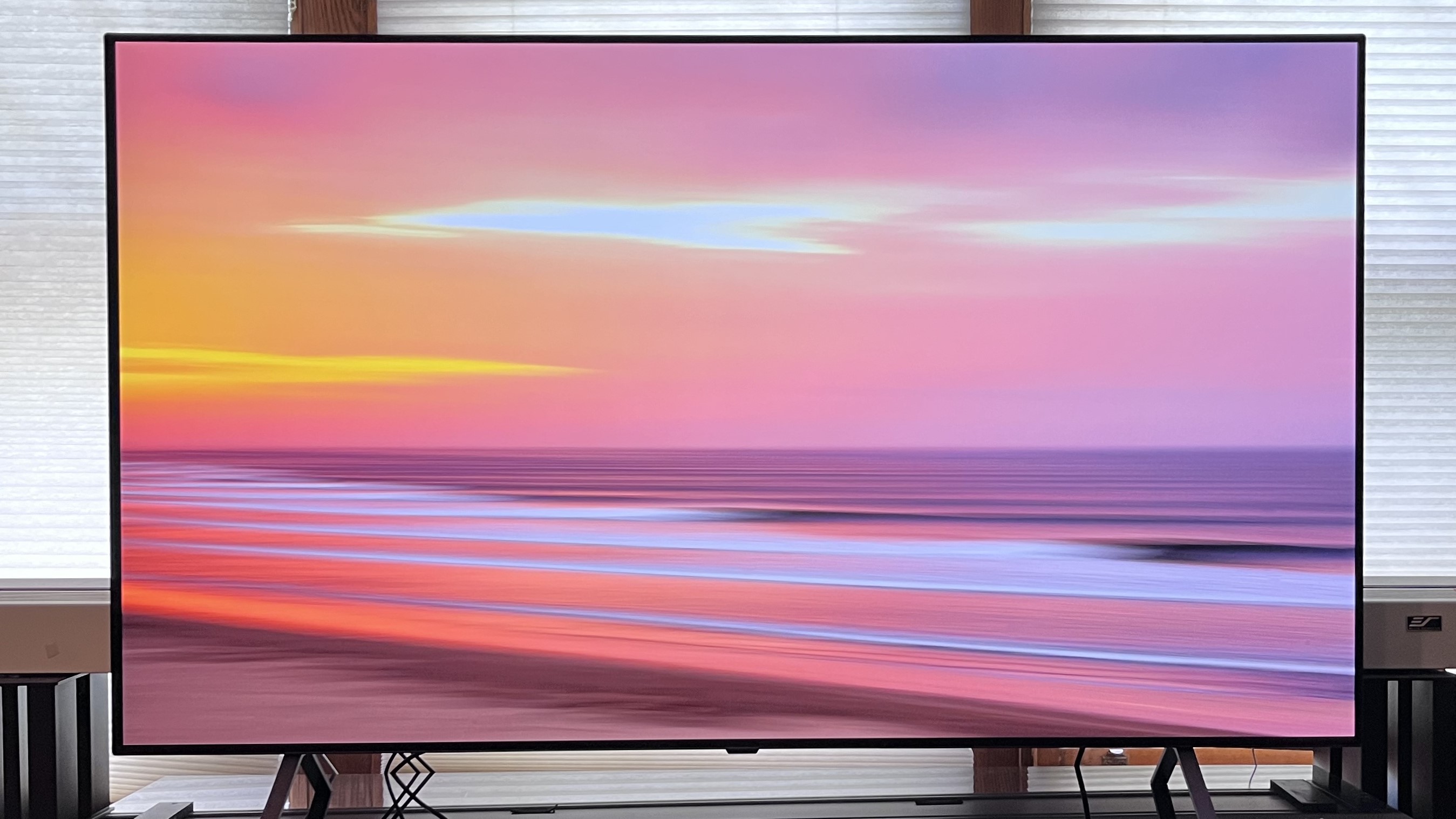
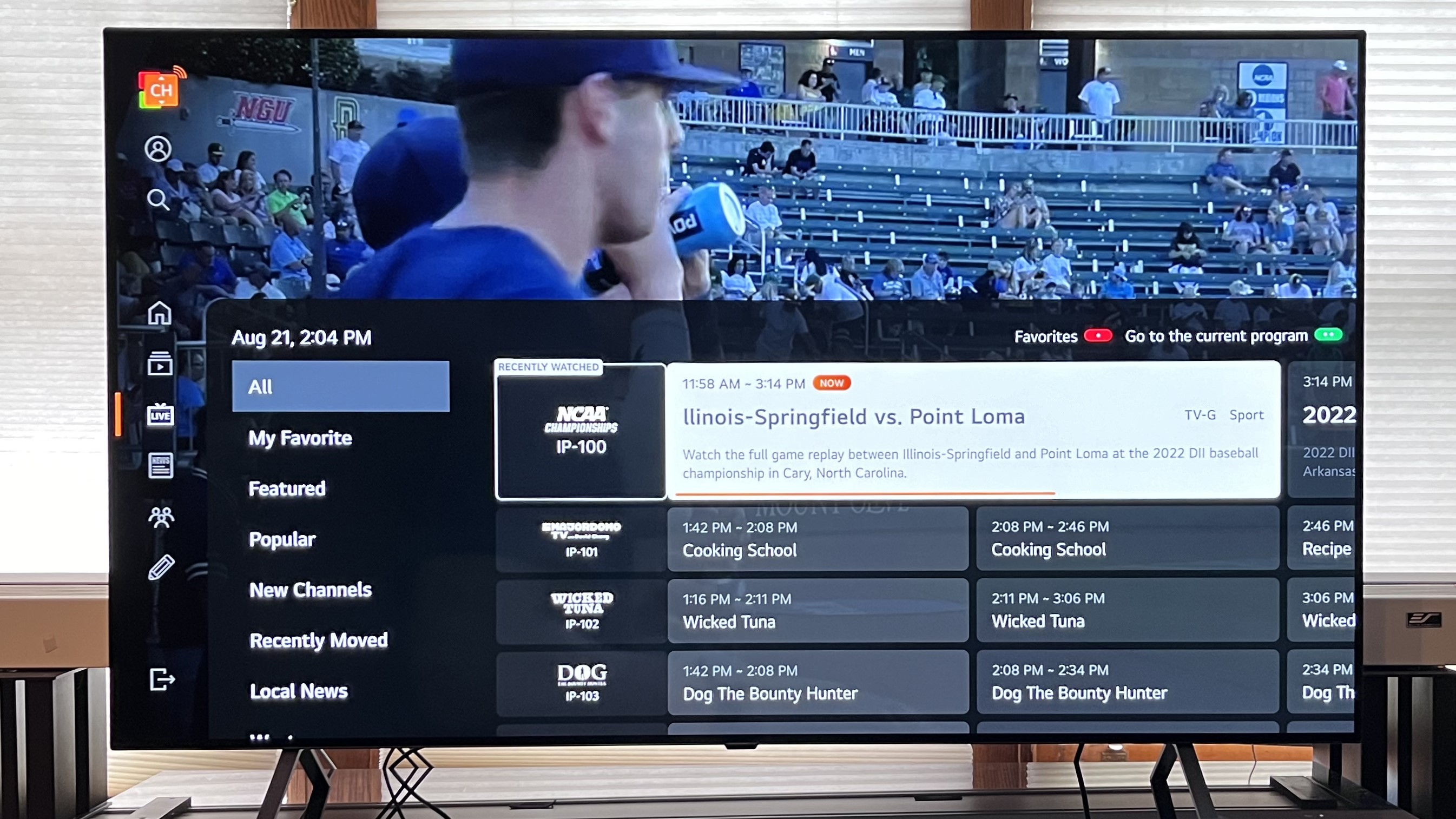
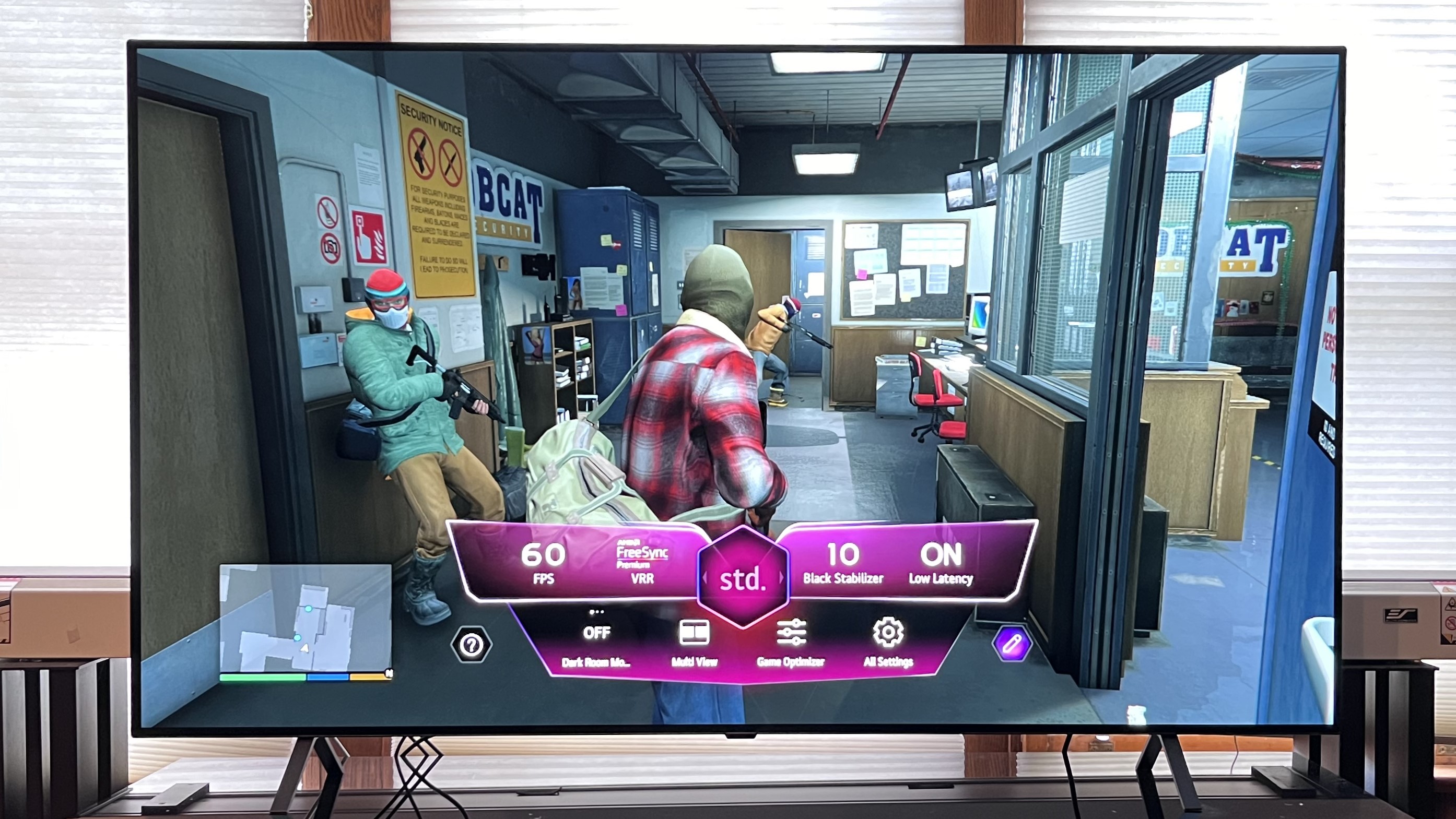
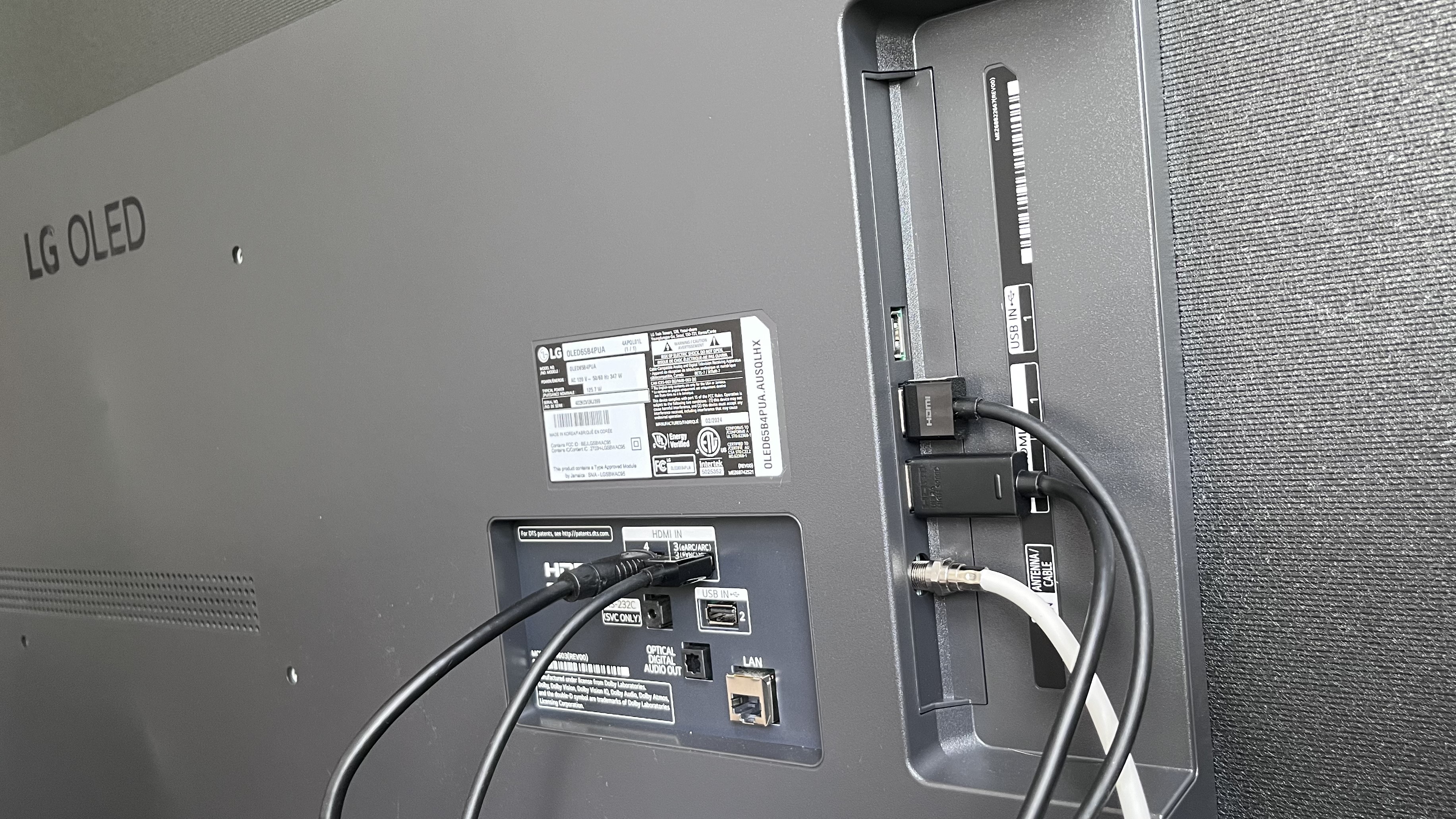
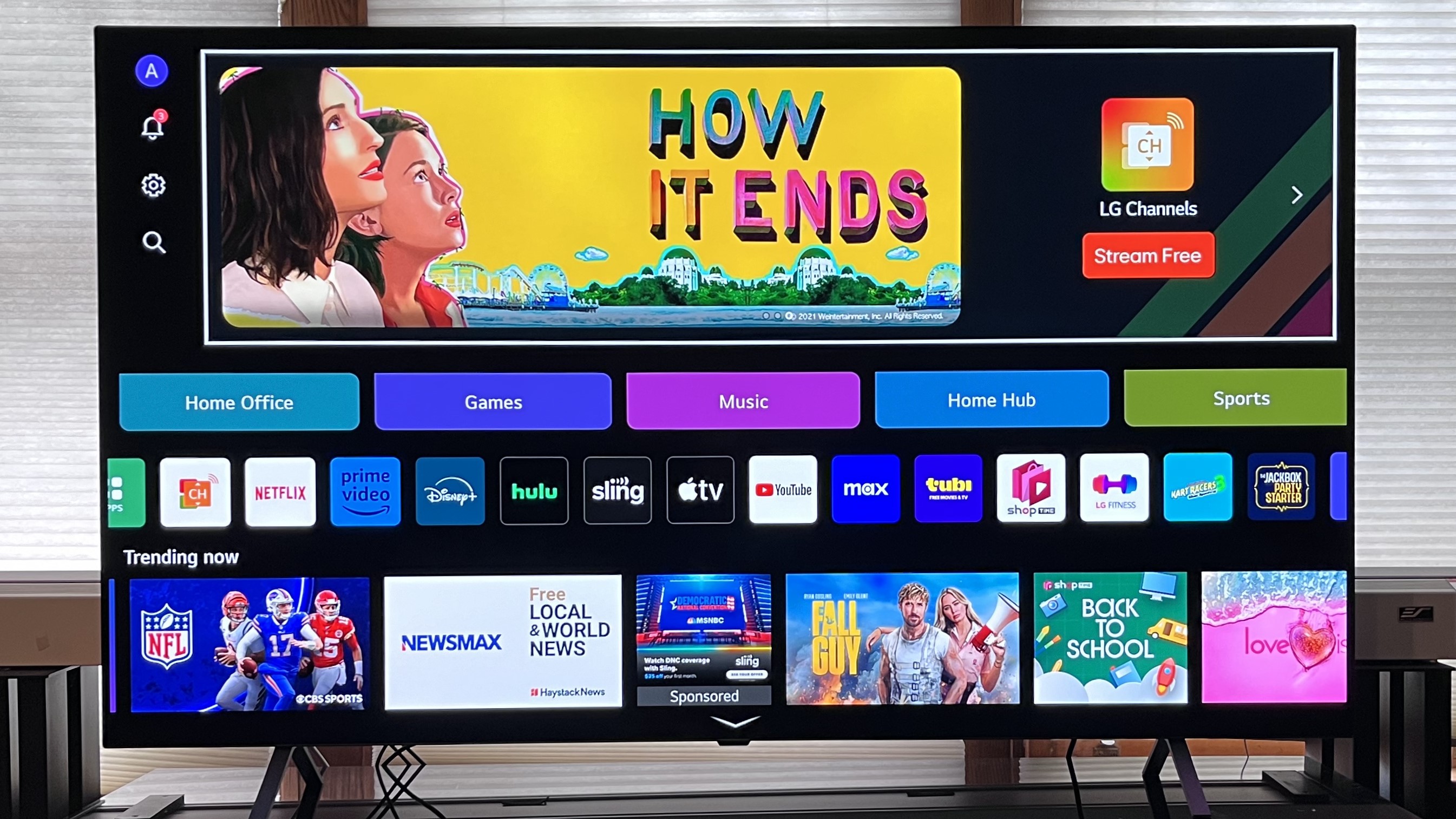
Specifications
Reasons to buy
Reasons to avoid
1 minute summary: If you're looking for a cheaper way to get a 2024 OLED TV, then the LG B4 is for you. Although it's price isn't much less than the step-up LG C4, it's still cheaper, with further discounts likely to come. The B4 may be the entry-level OLED in LG's 2024 lineup, but I feel it outperforms its price, delivering a rich, colorful, accurate picture with plenty of detail. When I tested the B4, it proved to be a fantastic performer for movies, but also an accomplished gaming TV, with its four HDMI 2.1 ports supporting many features found in the best gaming TVs such as 4K, 144Hz, Dolby Vision gaming, VRR and more. I found its during testing that its sound isn't the strongest, with limited bass and average virtual surround reproduction, and its picture brightness pales compared to more premium OLED TVs, but the B4 is still an excellent entry-level set.

Reasons to buy
✅ You want an OLED on a budget: The B4 is cheaper than any other 2024 OLED TV on the market and mostly covers all the bases.
✅ You want a cheaper OLED for gaming: The B4 is an excellent gaming TV, with four HMDI 2.1 ports supporting 4K, 144Hz, VRR and more.
✅ You want a detailed picture: The LG B4's crisp detail, rich contrast and bold colors suggest a more premium OLED.
Reasons to avoid
❌ You want great sound: The B4's built-in sound doesn't match the quality of its picture, with limited bass and Dolby Atmos effects.
❌ You want the brightest OLED: Compared with step-up OLED models, the B4's brightness is average, peaking at 656 nits.
❌ You need full HDR support: The B4 supports Dolby Vision HDR, but not HDR10+.
In-depth analysis

The B4's picture impressed during our testing, with its deep black levels, strong contrast and vibrant colors in particular standing out. In our review, we praised the B4's "exceptional shadow detail" and its Dolby Vision Filmmaker Mode, which provided an accurate picture with ease. We did find that its lower brightness made its picture less dynamic than what you'll find in step-up OLEDs such as the LG C4, but the B4's picture is still very good, especially for an OLED at this price.

The B4's sound is average and while it does the job, it won't beat TVs like the Sony Bravia 8 anytime soon. While it delivers clear dialogue and has a good balance, its bass is limited and virtual surround sound effects lack impact. At higher volumes, it can even sound "thin and edgy" as we said in our review. For casual viewing, the B4's sound will most likely be fine, but if you're looking for a more cinematic experience, you'll want to add a soundbar.

The B4 uses LG's own smart TV platform, webOS, and it's easily one of the best smart interfaces on the market. Quick Cards organize apps into easy to navigate categories and a Quick Menu, which we praised in our review, means useful settings can be adjusted easily without moving away from what's on screen. There is a large banner ad at the top of the home page, but this is becoming commonplace on smart TV platforms and is really the only criticism we have of the user-friendly webOS.

With four HDMI 2.1 ports supporting 4K 144Hz, Dolby Vision gaming, VRR (including AMD FreeSync Premium and Nvidia GSync), HGiG, ALLM and Dolby Vision gaming, the B4 has things more than covered when it comes to gaming. Its Game Optimizer is a useful feature that allows for easy adjustments to gaming settings and there's also cloud gaming app support. A 9.1ms input lag time (with Boost Mode activated) means the B4 delivers exceptional gaming performance and combined with the features listed above, the B4 comes out as a superb gaming OLED with a cheaper price tag.

The 65-inch B4 costs roughly $1,499 / £1,699 / AU$2,795. When compared to the $1,599/ £1,899 / AU$3,495 you'll pay for the LG C4, which provides higher brightness and a performance boost thanks to a faster processor, the B4 doesn't offer the greatest value overall. Still, it is a well-featured and high quality OLED TV that more than justifies its price.
LG B4 test results
The best premium OLED TV
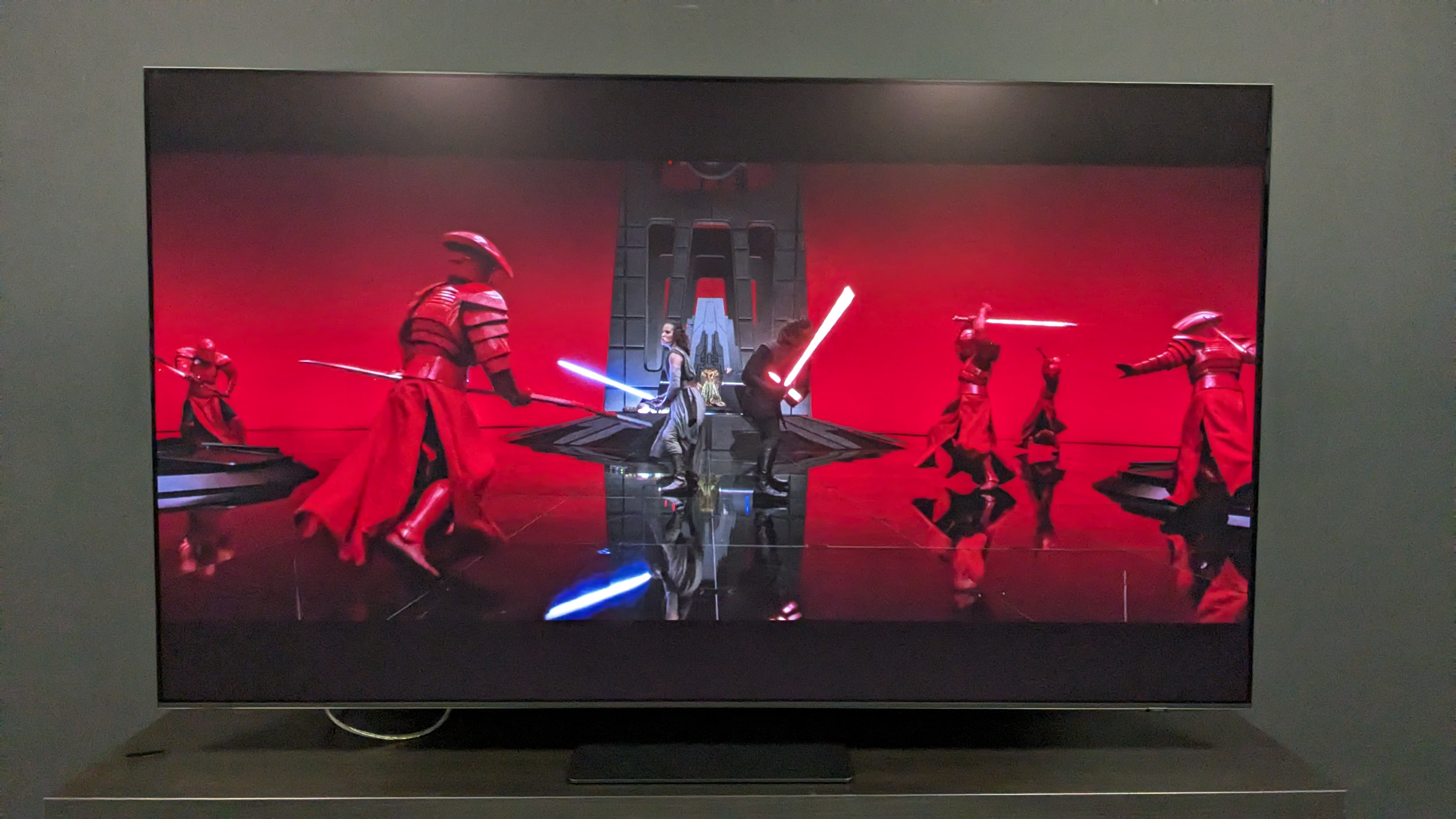
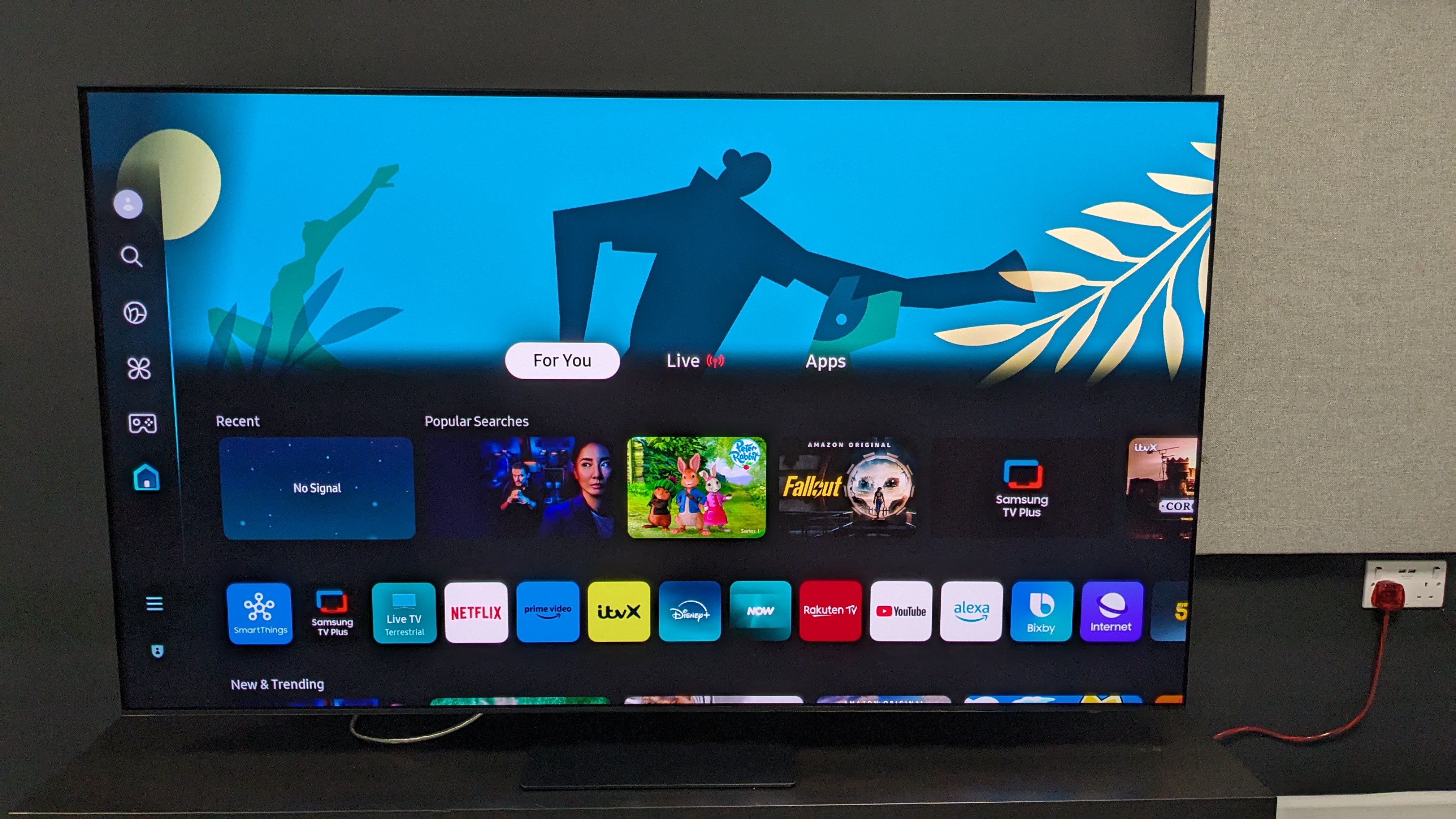
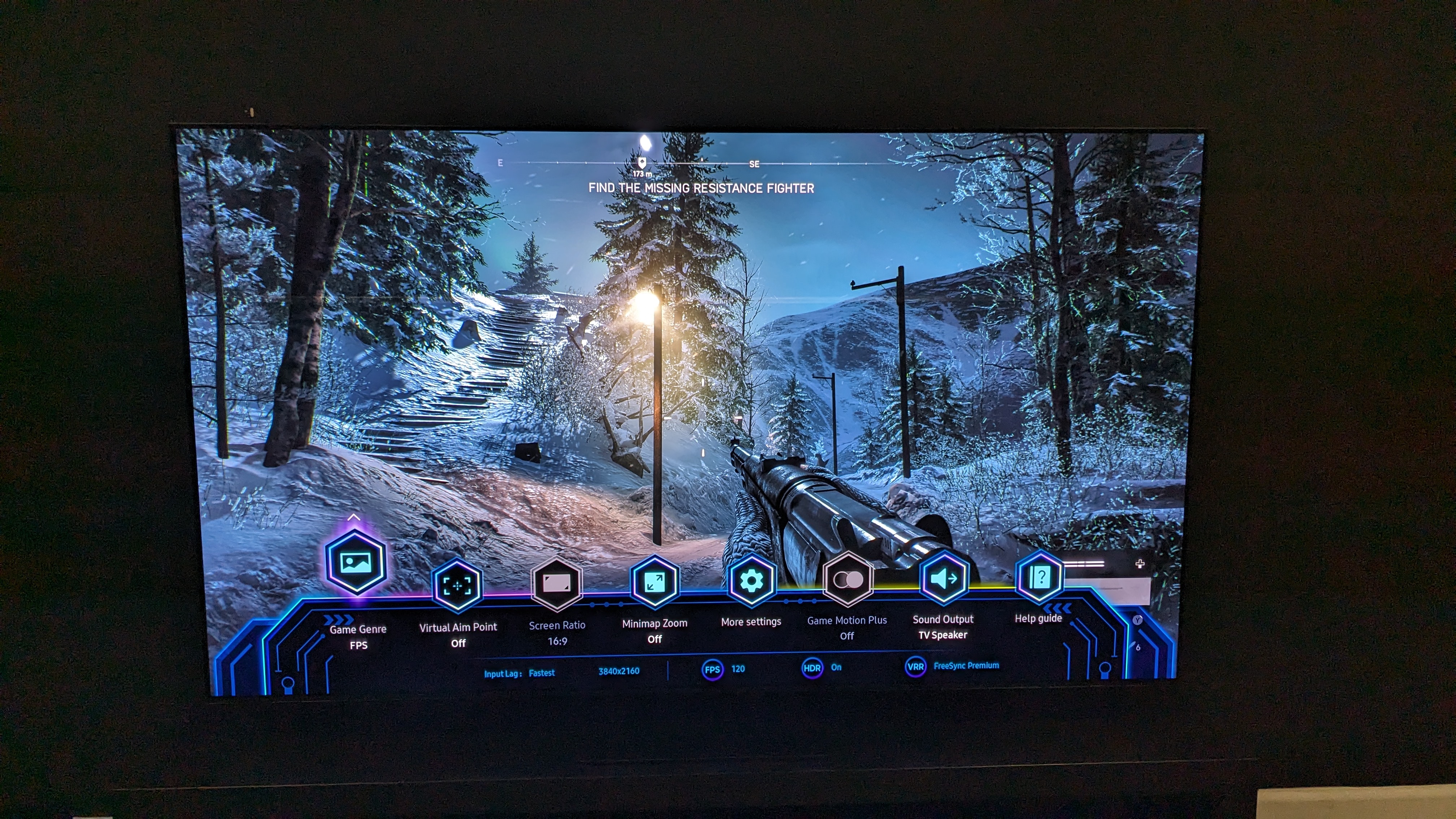
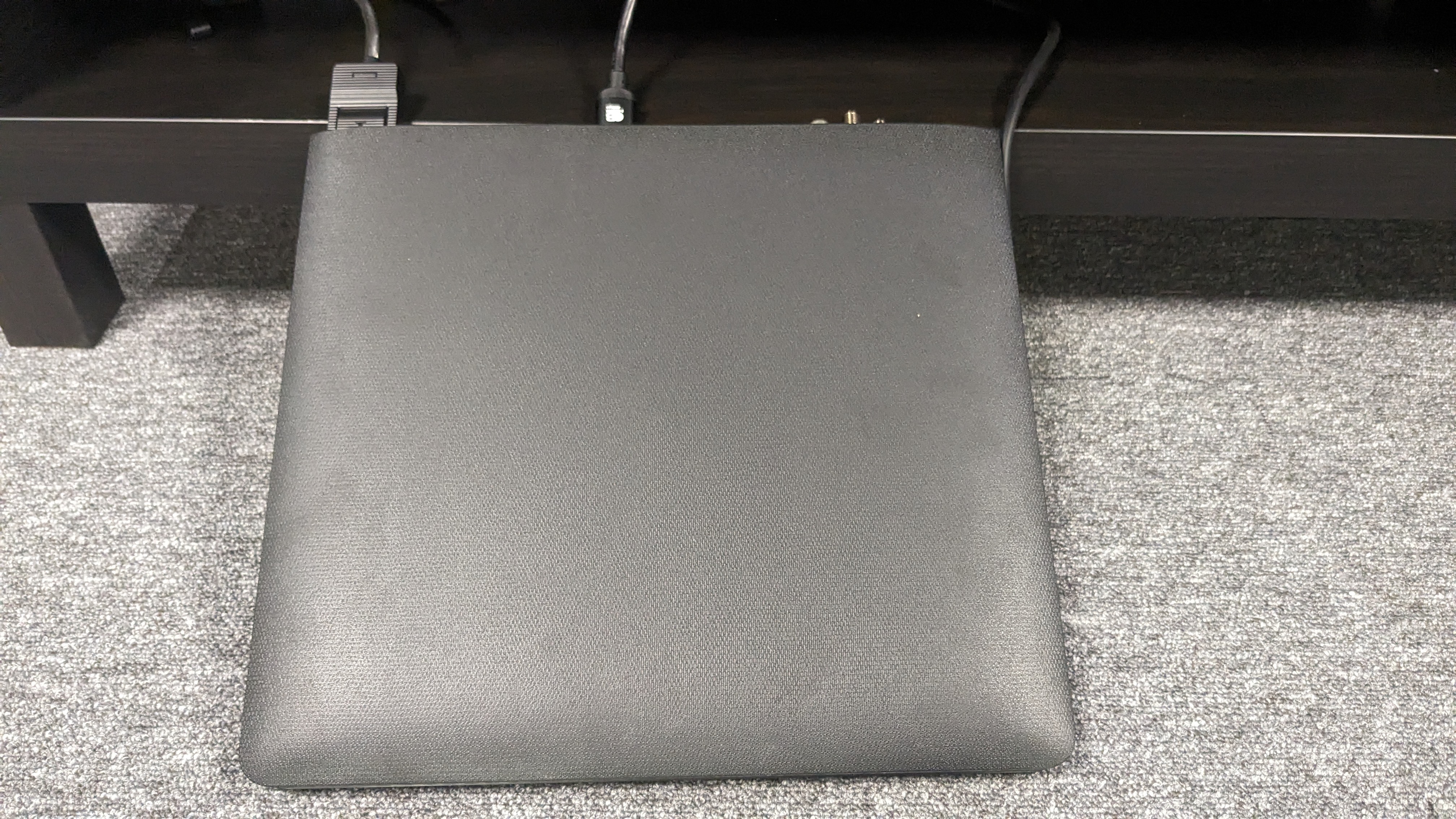
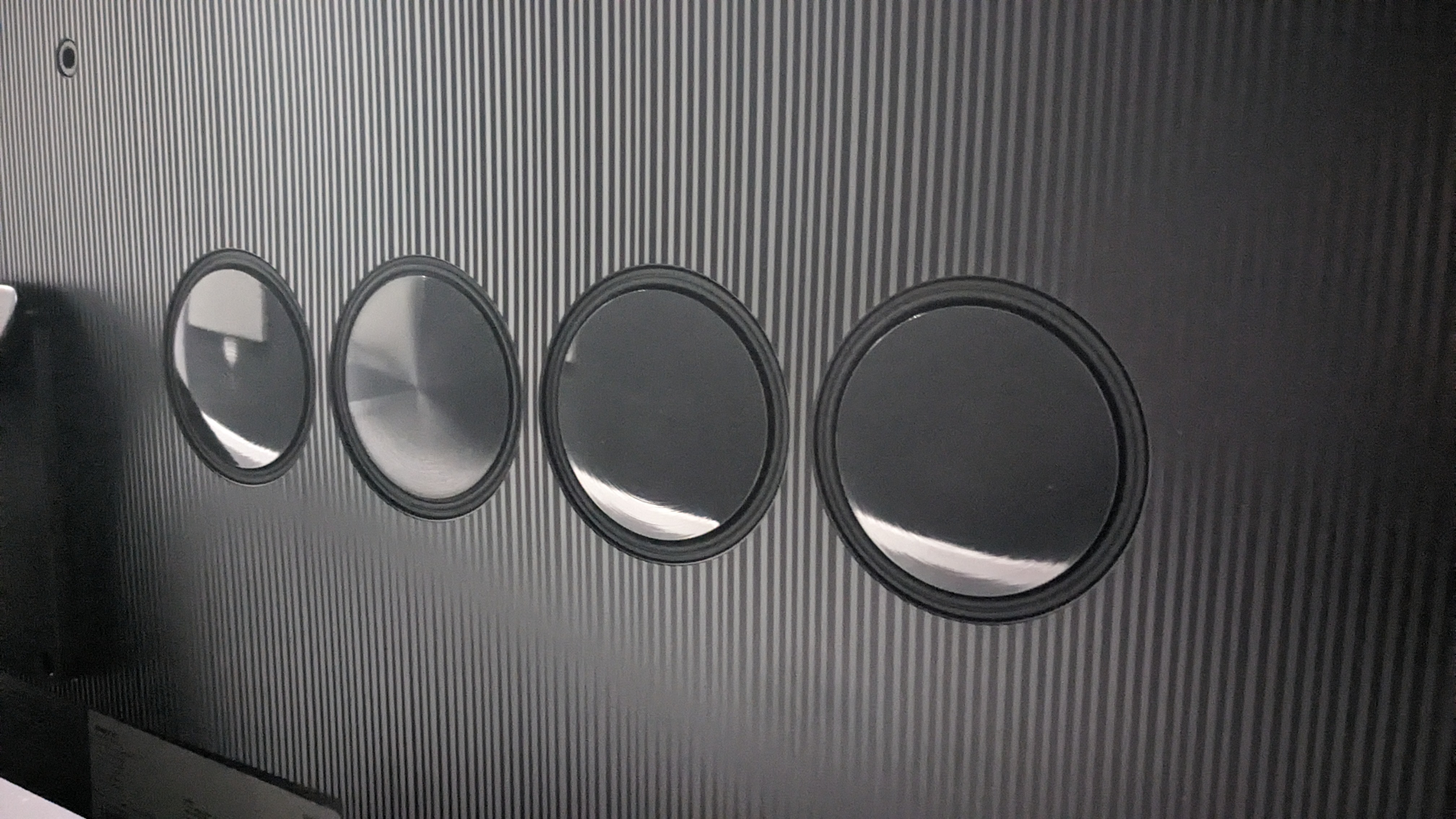
Specifications
Reasons to buy
Reasons to avoid
1-minute summary: The Samsung S95D, with its brighter, anti-reflective QD-OLED screen, was the 2024 TV I wast most eager to get in our testing rooms to see if it lived up to the hype – and boy did it. Its most impressive feature was that new OLED Glare Free anti-reflection tech, which solved OLED's major problem with reflections. Even with overhead lights turned up, the S95D's picture was prominent and visible. Thankfully, it also maintained the spectacular picture quality I've come to know from high-end QD-OLEDs, meaning dazzling brightness and dynamic color balanced with rich black levels. It's also an accomplished gaming TV, with four fully kitted out HDMI 2.1 ports with all the gaming greatness you need: 4K 144Hz, VRR, ALLM. The Game Hub means its easy to choose your settings, and it performs incredibly. It also looks beautiful with a floating stand design that gives it a clean, almost futuristic appearance, and connections hidden away in a separate box. This all comes at a premium price, but if you can stretch your budget, it's so worth it, and it's why I feel the S95D is the standard bearer for TVs in 2024.
Read our full Samsung S95D review

Reasons to buy
✅ You want an OLED fit for all rooms: With OLED Glare Free anti-reflection tech, the S95D's impeccable picture can be viewed in the brightest of rooms.
✅ You want the premium QD-OLED experience: Balancing contrast and brightness to near-perfection, the S95D is premium OLED defined.
✅ You want an OLED that looks premium: A trim profile, razor-thin depth and a 'floating' design make the S95D easily one of the best-looking TVs around.
Reasons to avoid
❌ You want full HDR support: Despite covering nearly all the bases, the S95D does not support Dolby Vision HDR. We're fine with that, though, given its performance.
❌ You don't want to fiddle with Filmmaker Mode: Other OLEDs' Filmmaker Modes don't need tweaking, but the S95D's does to limit black crush.
❌ You're on a budget: Elite performance does unfortunately come with an elite price tag, and the S95D sits near the top of the premium end of the OLED market.
In-depth analysis

We described the S95D's picture quality as "its absolute highlight" in our review, thanks to its new-gen QD-OLED screen that hits high brightness levels. We measured it at 1,868 nits on a 10% window in Standard mode (besting the LG G3's 1,449 peak brightness in the same tests) and providing stunning, rich contrast with beautifully deep black levels. We also said in our review that thanks to some new AI enhancements "textures are ultra-realistic – never has an OLED TV looked more detailed" as everything from object detailing to people's skin tones had a real lifelike quality. It also doesn't shy away from displaying bold, dynamic colors that jump from the screen, but it's the S95D's anti-reflection tech that we think steals the show, solving OLEDs' age-old problem with pesky reflections, due to the low full-screen brightness of OLED – this TV is comfortable and visible wherever you put it. Despite a lack of Dolby Vision HDR support and some black crush in the odd dark scene, we said that "This is what OLEDs should strive to be" and a lot of that stems from the S95D's spectacular picture.

Built-in sound can be a tricky area for TVs and although the S95D's isn't perfect, it's very effective. Object Tracking Sound+ (OTS+) means sound and the action on screen are connected "flawlessly", as we said in our review. We also praised its punchy bass levels, which had plenty of power and heft to suit the most chaotic action scenes despite its thin design. Dialogue is also clear throughout, regardless of what you're watching. Unfortunately, we found the S95D's soundstage to be limited compared to TVs with better sound, such as the Sony A80L, but most people will be pleased it with overall. You may not need a soundbar, though we think the S95D's picture deserves one that offers equally epic audio if you can.

Although Tizen hasn't seen as many significant upgrades as other smart TV platforms, such as LG's webOS, it's still solid overall. Its different hubs for Daily+, Game and Smart Things make navigation and organization smoother and more customizable that previous Samsung TVs. While the number of recommendations on its home menus can make it feel a little cluttered, it's still a good smart TV platform that most people will find easy to use, and has basically every streaming service you could want on board.

The S95D carries pretty much everything we look for in a gaming TV: four HDMI 2.1 ports that support 4K, 144Hz, variable refresh rate including AMD FreeSync Premium Pro, HGiG HDR, auto low latency mode, and a great load of cloud gaming options from Xbox, Nvidia GeForce Now, Luna and more. Its ultra-low input lag time, which we measured at 8.9ms, means gaming itself is smooth, fast paced and responsive during any game, including graphically intense FPS games. Although it may be a little on the pricey side for some, we said the S95D is "a gamer's dream TV" and with all these features and its incredible performance, it's an unforgettable premium gaming experience.

Value was one area where the S95D was always going to have to work hard, because it is pricey. For a 65-inch, you're looking at spending $3,099 / £2,899 / AU$4,495, which sits at the very top of the OLED TV market alongside the LG G4, which is priced at $2,999 / £2,699 / AU$5,295. However, we think it more than justifies its price with the performance it delivers and the features it carries, and prices are already falling on the S95D despite only being out for a few months, and its likely to be on sale during sales events like Black Friday. But, make no mistake - this elite TV comes at a price.
Samsung S95D test results
The best OLED TV for sound
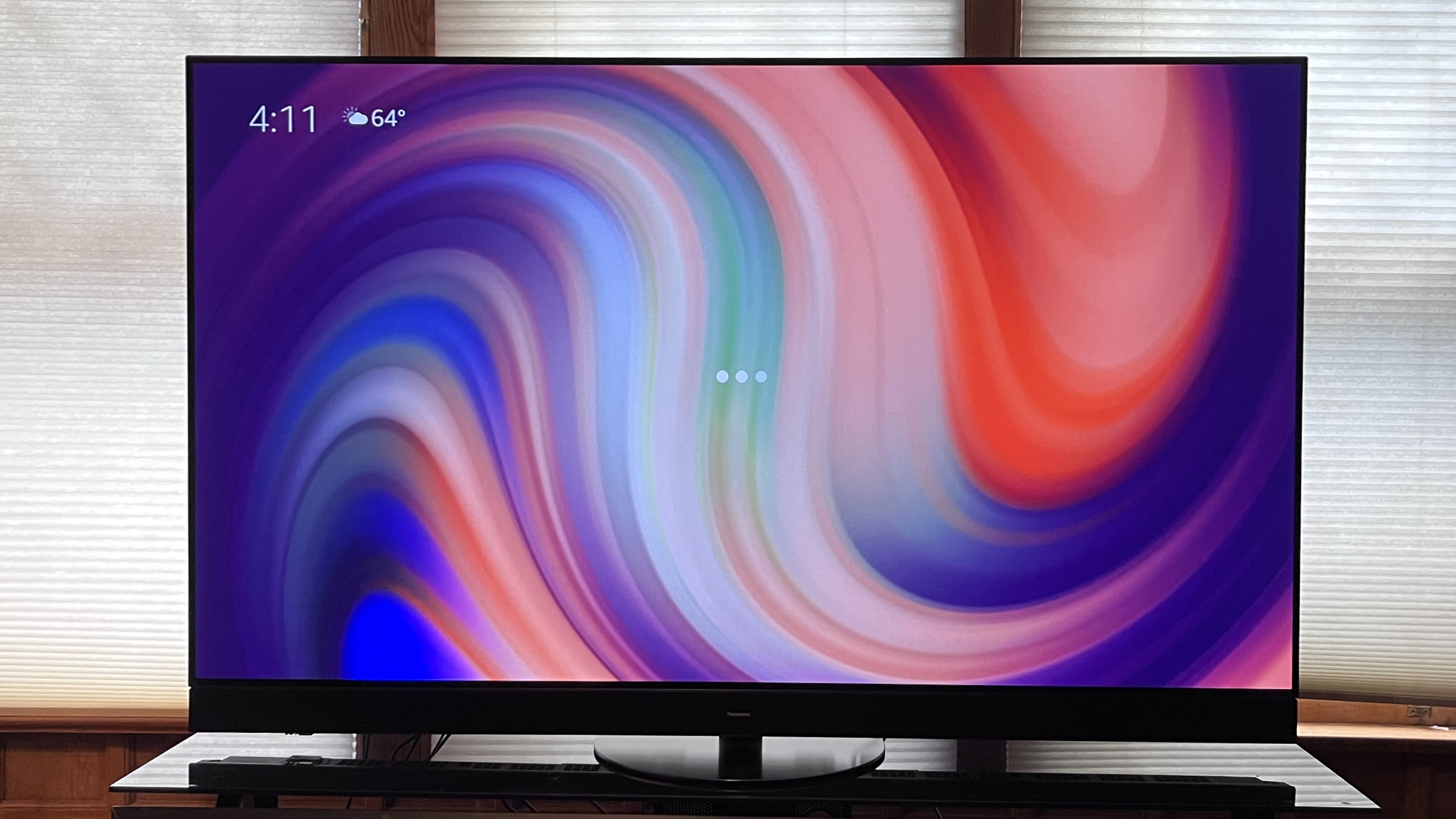
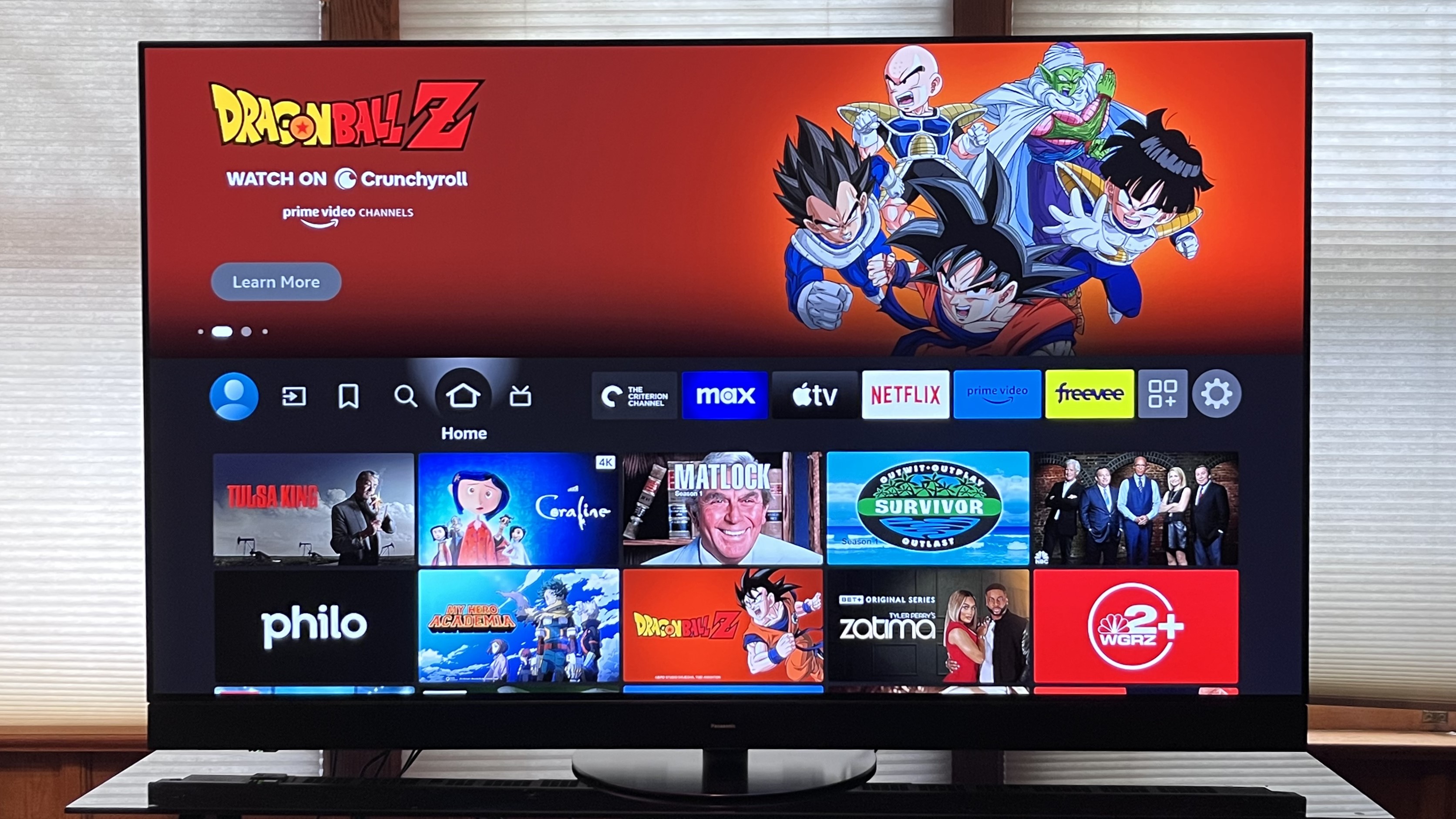
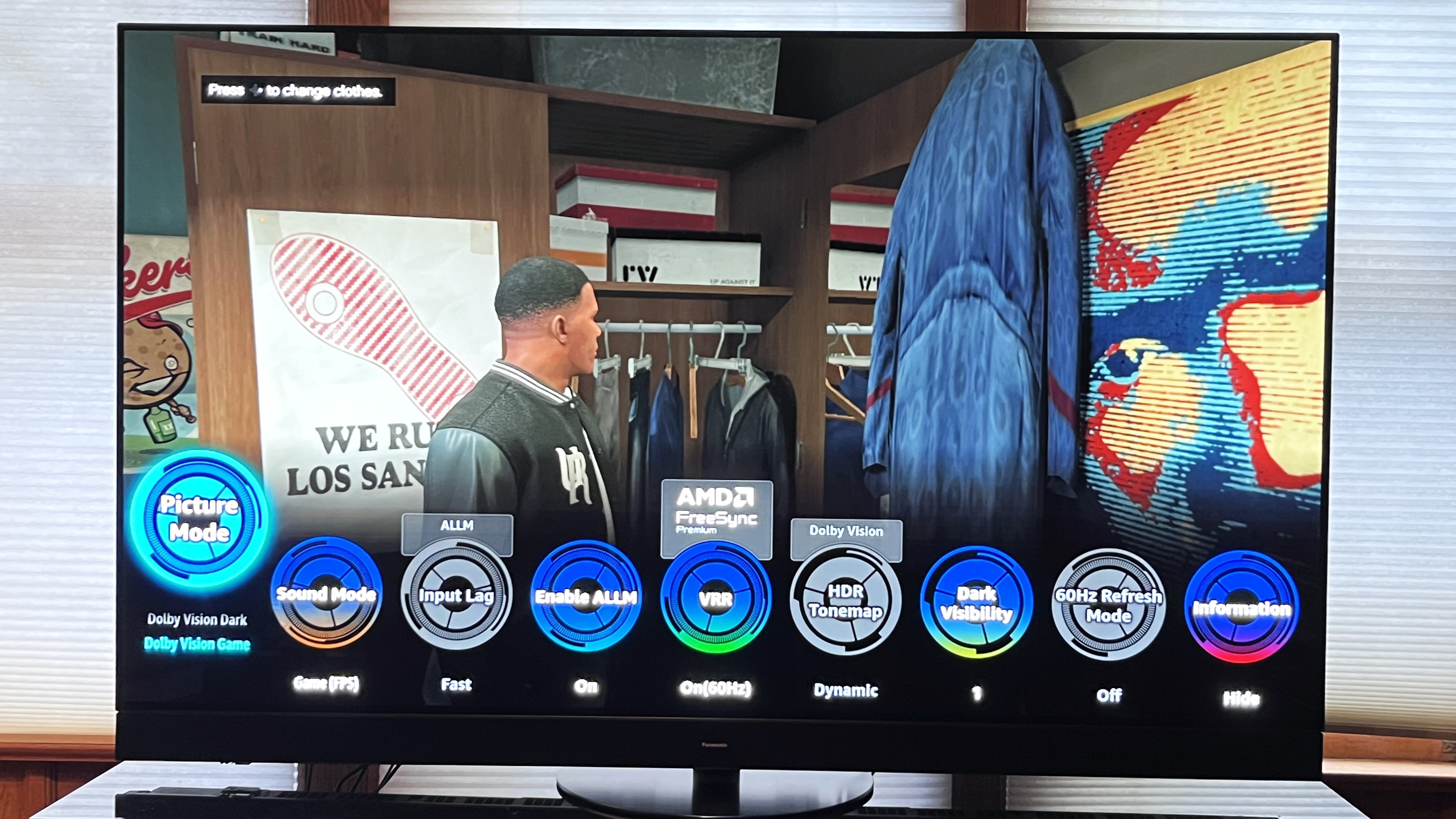
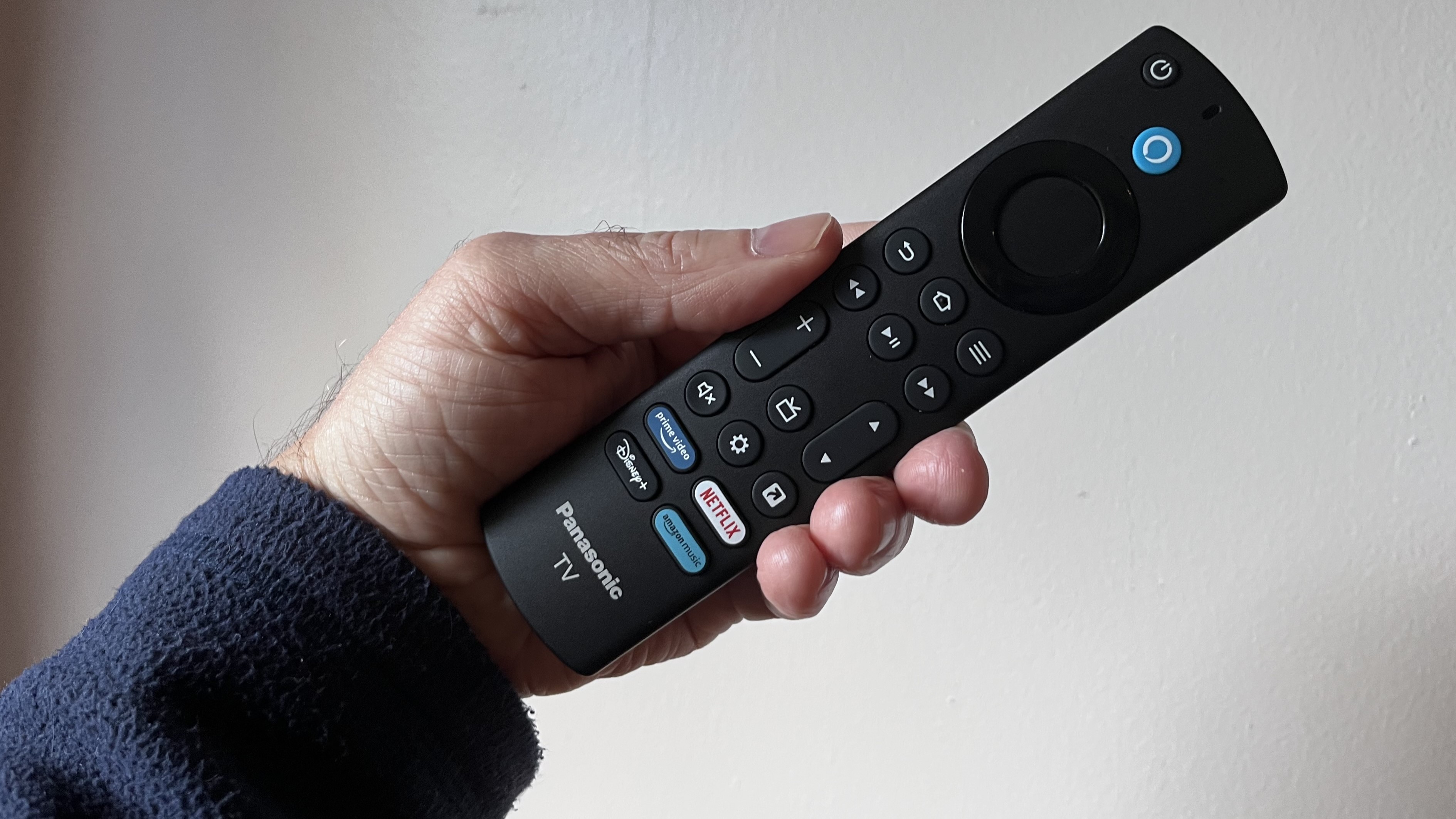
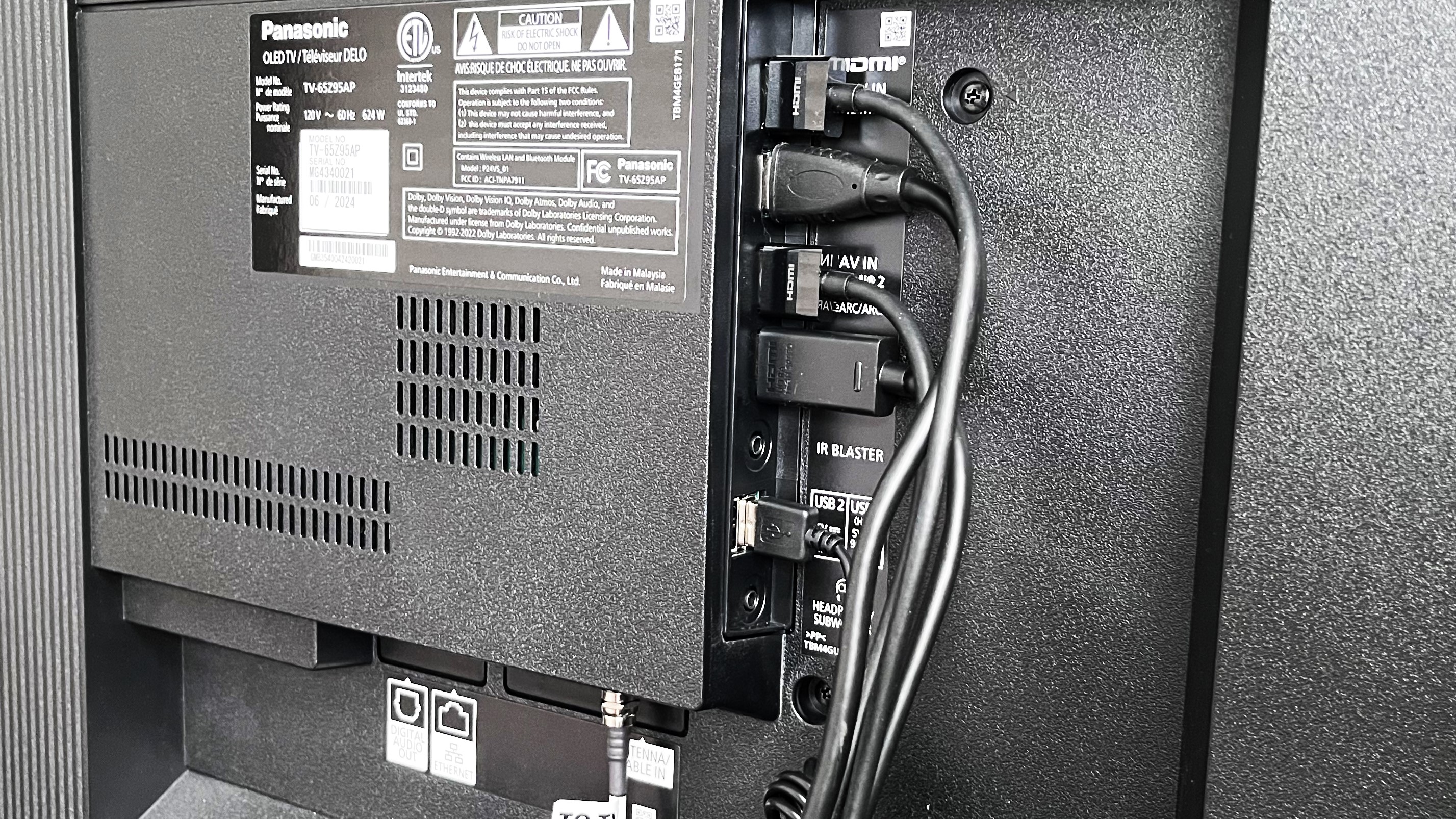
Specifications
Reasons to buy
Reasons to avoid
1-minute summary: Panasonic models consistently rank among the best OLED TVs, and the Panasonic Z95A, the company’s flagship model for 2024, continues that tradition. Notably, the Z95A is among the first Panasonic TVs to be sold in the United States in over a decade, and it’s an impressive offering for US consumers to become reacquainted with the brand. Our selection of the Z95A as the best OLED TV for sound is based on its built-in 5.1.2-channel, 160W Dolby Atmos speaker system, which features both side and top-firing drivers that deliver powerfully immersive sound for a TV. There’s even a subwoofer output jack for connecting a sub for extra bass, and Space Tune and Sound Focus modes that let you automatically EQ the sound for your room, and adjust it for off-center seating, respectively. Featuring an OLED MLA panel that delivers impressively high brightness, the Z95A also delivers on the picture quality front, and it has special picture modes such as Netflix Adaptive Calibrated that optimize pictures when viewing with that streaming service. Panasonic’s top OLED TV resides at the upper tier of the OLED TV price range, but its excellent performance, and effective built-in speakers, which are a perfectly adequate alternative to an external soundbar, strongly enhance its value.
Read our full Panasonic Z95A review

Reasons to buy
✅ You’ll be watching in a bright room: The Z95A’s picture is bright enough to hold up in well-lit rooms, and its anti-reflection screen helps to reduce screen reflections from lamps.
✅ You want great sound, but not a soundbar: A built-in 5.1.2-channel Dolby Atmos speaker system on the Z95A delivers powerful and surprisingly immersive audio. It’s good enough that you don’t need a soundbar.
Reasons to avoid
❌ You want the best possible gaming TV: The Z95A has a great suite of gaming features, but unlike some competitors, it has only two HDMI 2.1 ports and no built-in cloud-based gaming.
❌ You want the best smart TV interface: The Amazon Fire TV interface used by the Z95A is an improvement over the smart TV system used by earlier Panasonic TVs, but it’s overly busy and focused on Amazon’s Prime Video streaming offerings.
In-depth analysis

When I tested the Panasonic Z95A, I was impressed with its rich color reproduction and strong contrast. What sets the Z95A apart from other OLED TVs, however, is the high brightness yielded by its OLED MLA (Micro Lens Array) panel, which delivered a peak brightness of 1,495 nits on a 10% white window pattern when I measured it. That level of brightness ranks it among other top OLED TVs such as the LG G4 and in my viewing brought out a full level of detail in high dynamic range sources, which popped visually on the Panasonic’s screen. The Z95A also displayed exceptional shadow detail even in challenging movies and TV shows like The Penguin on Max, and its impressive motion handling made all manner of sports and games look smooth and blur-free.

The Z95A is designed to be used without a soundbar, and its 160W, 5.1.2-channel built-in speakers deliver the immersive audio goods when watching movies or shows with Dolby Atmos soundtracks. With up-firing drivers located at the top of the TV’s frame, height effects in soundtracks come across as surprisingly vivid for built-in TV speakers, and the front-firing left, right and center channel drivers deliver clear dialogue and accurate effects placement. This is one TV that can play loud, and its Space Tune automatic EQ feature ensures that bass effects sound smooth and bloat-free in your room while a Sound Focus feature lets you optimize the sound delivery for your chosen seating position.

Panasonic TVs for 2024 get an upgrade to the Fire TV smart TV interface, and it’s a big improvement over the company’s previous my Home Screen interface used for streaming. The screen is a bit on the crowded side, though mostly asy to navigate and also provides unique features such as an Ambient mode that lets you generate images using AI. There are extensive adjustments for tweaking both picture and sound, so if you want to go to town making your TV look and sound perfect, you’ll find all the tools you need in the Z95A’s setup menus.

The Z95A has extensive gaming features, including two HDMI 2.1 ports with 4K 144Hz, VRR (including Nvidia G-Sync and AMD Freesync Premium), and Dolby Vision gaming support. There’s also a Game Control Board pop-up menu that lets you makes tweaks to gaming-related settings without having to exit the main screen. I measured input lag in Game mode on the Z95A as a very respectable 12.6ms when I tested it. All considered, the Z95A is an excellent TV for gaming, and although we typically look for four HDMI 2.1 ports on the best gaming TVs, this Panasonic’s excellent built-in sound means you won’t need to sacrifice one of those ports for a soundbar.

Panasonic’s Z95A is undoubtedly an expensive TV, though it’s priced in the same approximate range as other flagship OLED TVs such as the LG G4 and Samsung S95D. The same feature that put the Z95A on this list as the best OLED TV for sound – its impressive built-in 5.1.2-channel speaker array – goes far to enhance its value, however, since the sound is good enough that you can get away with not using an external soundbar, which will save you money.
Panasonic Z95A test results
The best OLED TV for wall mounting
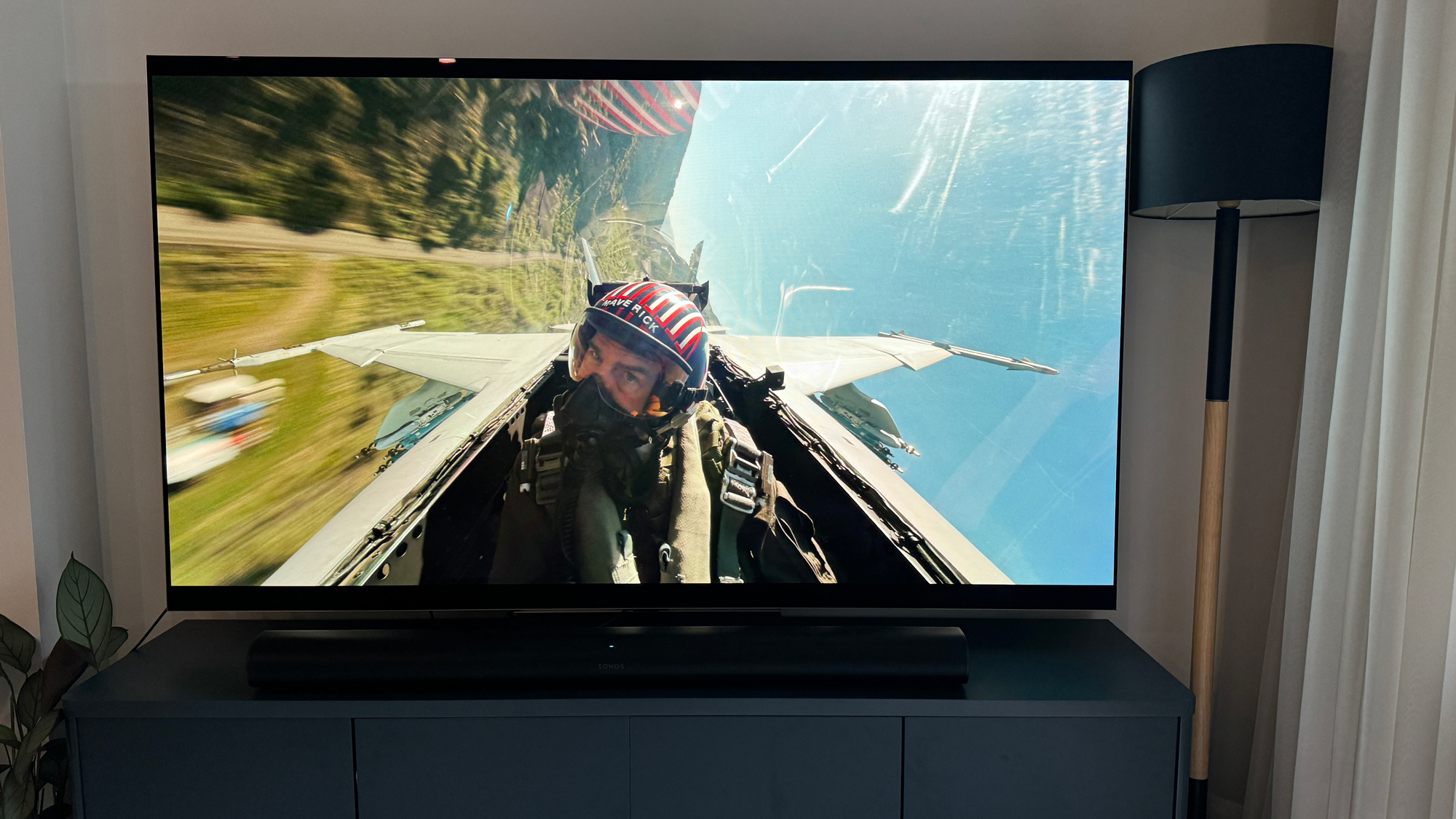
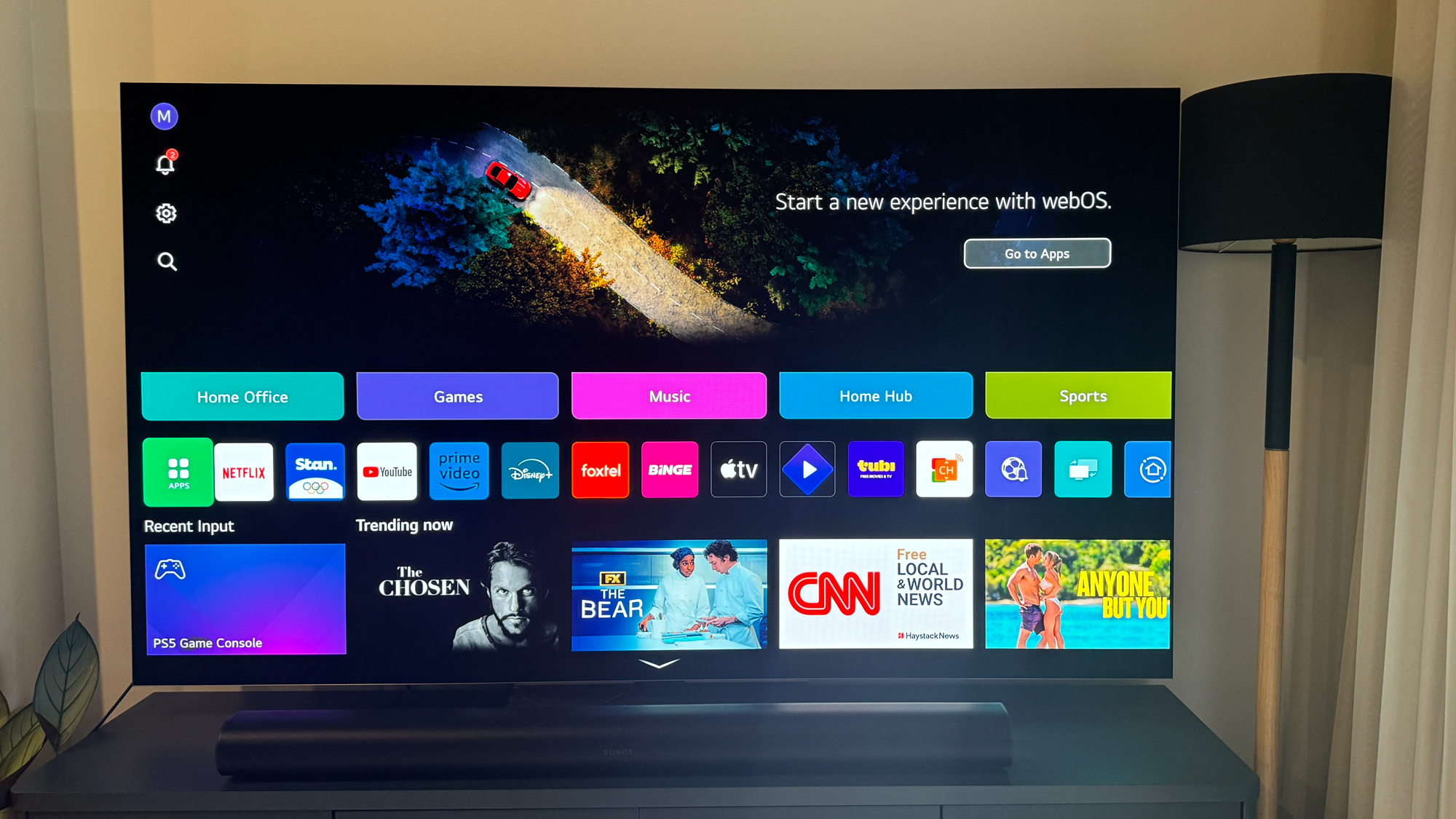
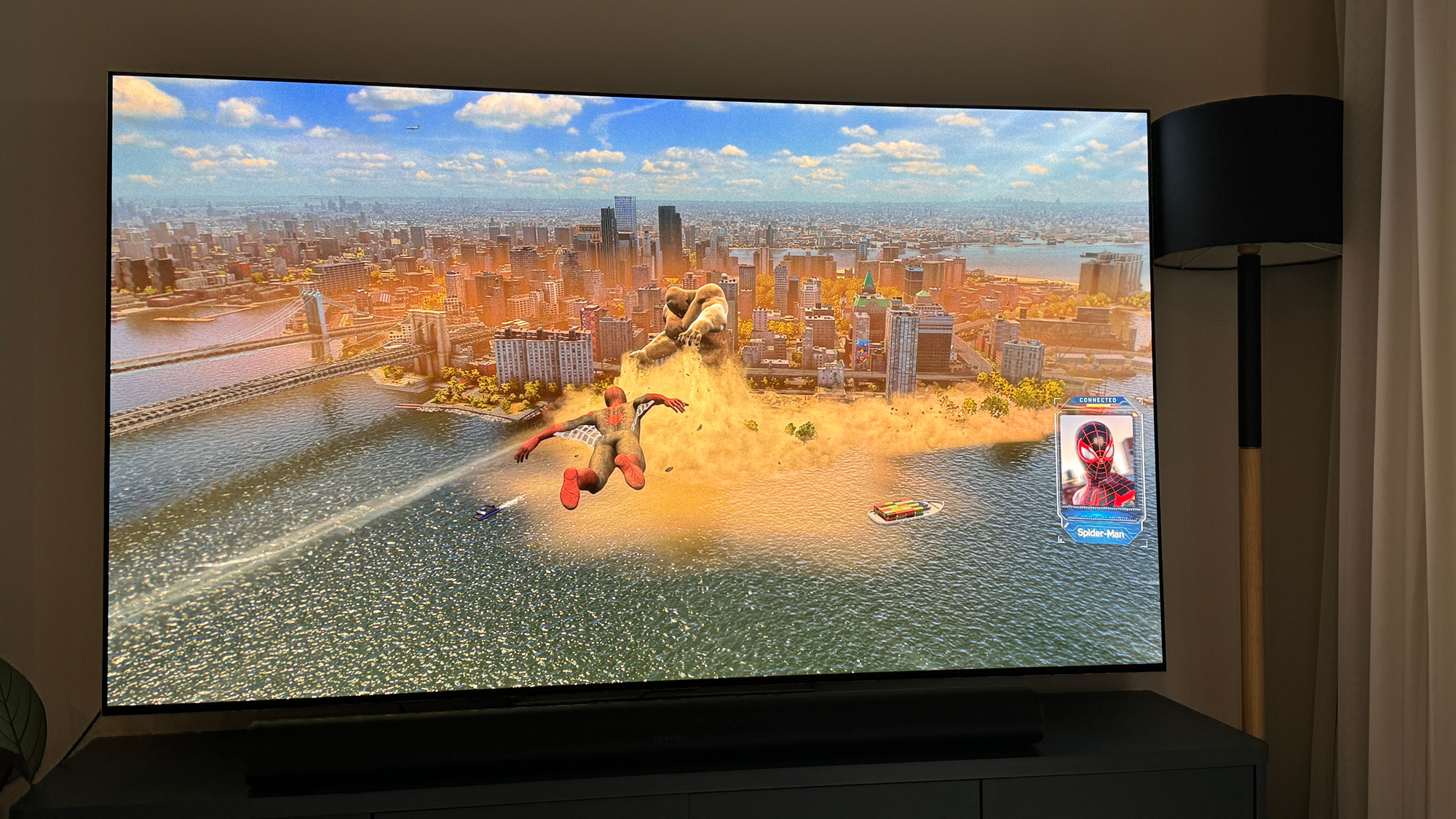
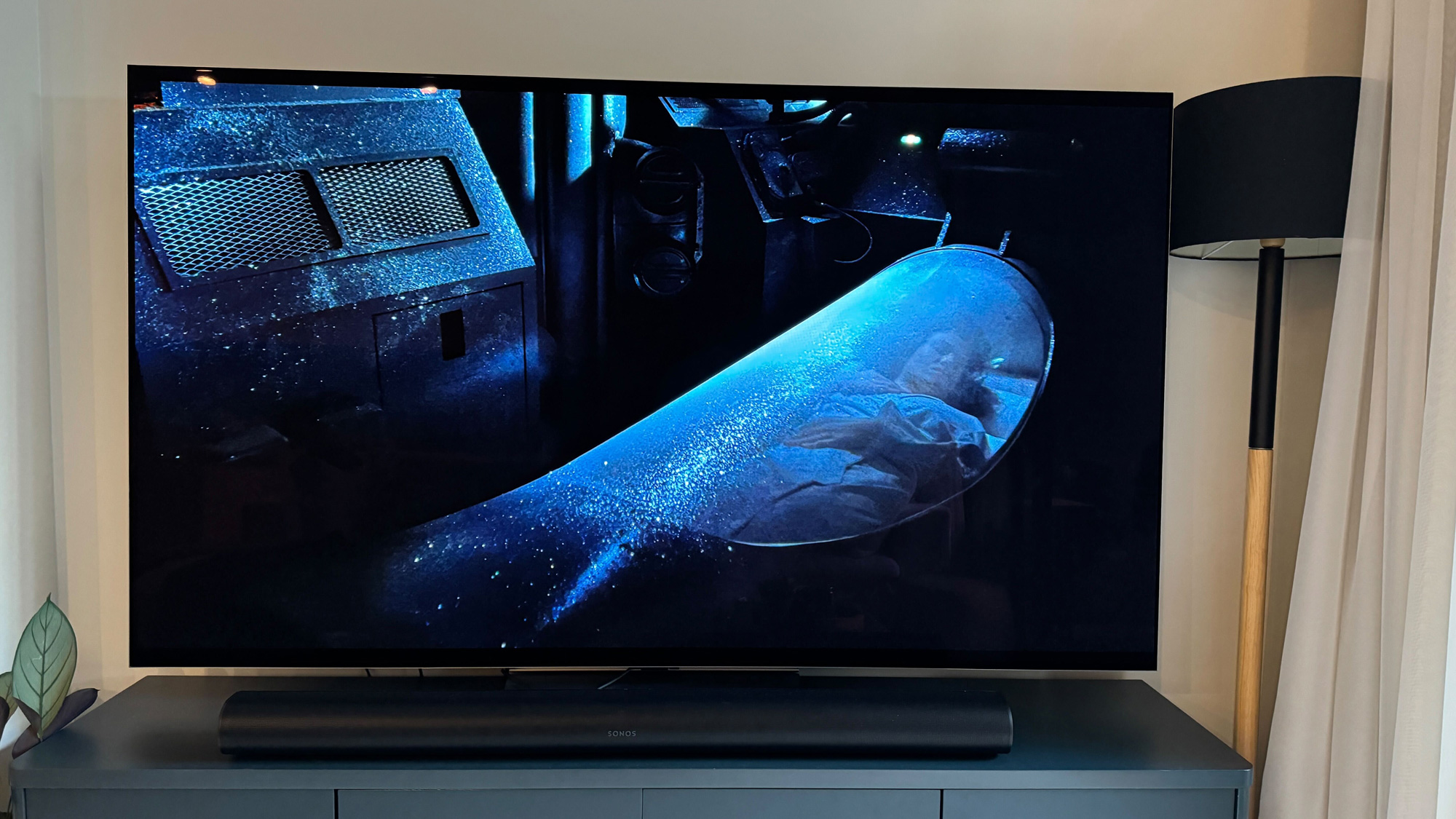

Specifications
Reasons to buy
Reasons to avoid
1-minute summary: The LG G4 is the company’s flagship OLED TV and it’s a stunner in many ways, from its bright, contrast-rich picture to its impressive built-in 4.2-channel sound and superior suite of gaming features. With a svelte, 1-inch frame and included frame that allows for a flush-mount installation the G4 is also a perfect TV for wall-mounting, and 55- and 65-inch G-series TVs in the US and the UK now also come with a pedestal stand for table installation. Our reviewer called the LG G4 “one of the best TVs I’ve ever laid eyes on,” praising both its ability to display bright pictures in well-lit rooms, with its anti-reflective screen effectively reducing screen glare. He also admired its handling of dark TV movie scenes, where the “increased brightness, inherent absolute contrast of OLED technology and LG's new Alpha 11 AI 4K processor work together to highlight shadow areas exactly where they need to be.” In short, the LG G4 will look as pretty as a picture mounted on your wall, and the picture itself will look amazing.
Read our full LG G4 review

Reasons to buy
✅ You want a fantastic picture: LG's OLED evo panel coupled with second-generation MLA technology and proprietary processing results in a bright picture with rich color and excellent contrast.
✅ You want a great gaming TV: Gamers will find a full suite of features and connectivity options on the G4, including 4K 120Hz support on all four HDMI 2.1 inputs. It's an excellent all-around option for gaming
✅ You want a TV for wall-mounting: Although certain G4 sizes come with a pedestal stand, LG designed this TV for a wall-mount installation, and its thin frame and zero-gap mount means it will blend beautifully with your wall.
Reasons to avoid
❌ You mainly use a TV's built-in speakers: The G4's built-in speakers are more than adequate, but not as powerful as those found on OLED TVs from Sony and Panasonic.
❌ You want HDR10+ support: The LG G4 supports all other HDR formats, but you won't find HDR10+ functionality here.
❌ You want to save money: The G4 is brighter than LG's C4, but that model comes close to matching the G4's picture quality in other areas, and it is considerably lower priced.
In-depth analysis

The G4’s Micro Lens Array (MLA) OLED display panel and Alpha 11 AI 4K processor combine to create an incredibly bright picture for an OLED TV with eye-catching highlights, particularly with 4K HDR content. We measured peak brightness at 1,489 nits in Filmmaker HDR mode on a 10% window, which is a notable leap over last year’s LG G3, though it trails the 1868 nits the Samsung S95D, our premium OLED TV pick in this guide, managed on the same test. Even so, the G4’s picture is defined by solid contrast, with detailed shadows and vibrant color. And it holds up equally well in both dim and bright lighting, with its anti-reflection screen effectively reducing screen glare in the latter viewing condition.

The G4 has 4.2-channel built-in speakers, and its AI Sound Pro feature can deliver 11.1.2 virtual channels. In our review, we found that for TV speakers the G4’s “is one of the better ones you can find as it can deliver more positional sound to your ears.” The AI Sound Pro mode works to deliver a more expansive soundfield – something we noted when watching the movie Top Gun: Maverick, and it does so without affecting dialogue clarity. A Wow Orchestra feature also lets the G4’s speakers work in tandem with select models in the company’s soundbar lineup, and it can deliver Dolby Atmos to such soundbars over a wireless connection.

LG's webOS 24 is the G4's smart TV platform, and thanks to a tidier home menu with more tailored TV show and movie recommendations and a new Quick Cards feature that makes app organization nice and easy, it's easily one of the best smart TV platforms around. It also has plenty of settings for those who like to experiment with picture and sound – which you can make instantly accessible, mercifully using an onscreen Quick Menu – and built-in hands-free voice control options as well. A user-friendly experience all around, and with pretty much unbeatable streaming app support.

The G4’s four HDMI 2.1 ports support 4K 120Hz up to 144Hz for PC gaming) making it a perfect choice for gamers. VRR including AMD FreeSync and Nvidia G-Sync and ALLM is also supported, and input lag is a low 12.9ms, which gets even lower with the TV in Boost mode. During our review, we played Spider-Man 2 on PlayStation 5 and it “ran as smooth as butter” with the G4’s Game Optimizer picture mode on. Rounding out the G4’s gaming features is a pop-up Game Dashboard menu that gives you easy access to the TV’s gaming-related picture settings.

The LG G4 is certainly not cheap, though it is priced around the same as other top 2024 OLED TVs such as the Samsung S95D. Its sleek, wall-mount-friendly design, excellent picture quality, and a full suite of gaming features all help enhance its value, but what you’re getting here is a premium TV at a premium price. Our pick for best OLED TV for sizes, the LG C4, is a better value proposition, though it has a less bright picture and less fancy design than the G4.
LG G3 test results
How to choose an OLED TV
How to choose the best OLED TV for you
OLED TVs tend to be premium TVs, which means you're getting a certain level of features in almost all of them – they're all 4K, they're mostly 120Hz for gaming, for example, and they tend to all have four HDMI ports, and premium smart TV software.
But they're absolutely not all the same. Some are much brighter than others (around twice as bright, in some cases), some have more HDMI 2.1 ports for next-gen gaming, some have better sound systems, and they don't all come in the same size options.
It's important to consider what size TV is best for you, and to do that you'll literally need to measure the space you have to work with. Remember a TV that fills every available scrap of space in your living room might sound like a great idea, but you'll need to consider viewing angles, screen brightness and whether you'll be able to sit a decent distance from the TV to fully appreciate it. The LG C4 has the widest range of sizes of any TV we feature, so if you need something smaller, that's a great place to start.
When it comes to HDR support, we recommend mostly that people choose TVs with Dolby Vision, because it's the most commonly used advanced HDR format on the best streaming services. Samsung TVs only use HDR10+, which is similar technology, but not as well supported. It's not a dealbreaker that Samsung's TVs don't support Dolby Vision, but as you'll see in our list, we prefer sets that include it.
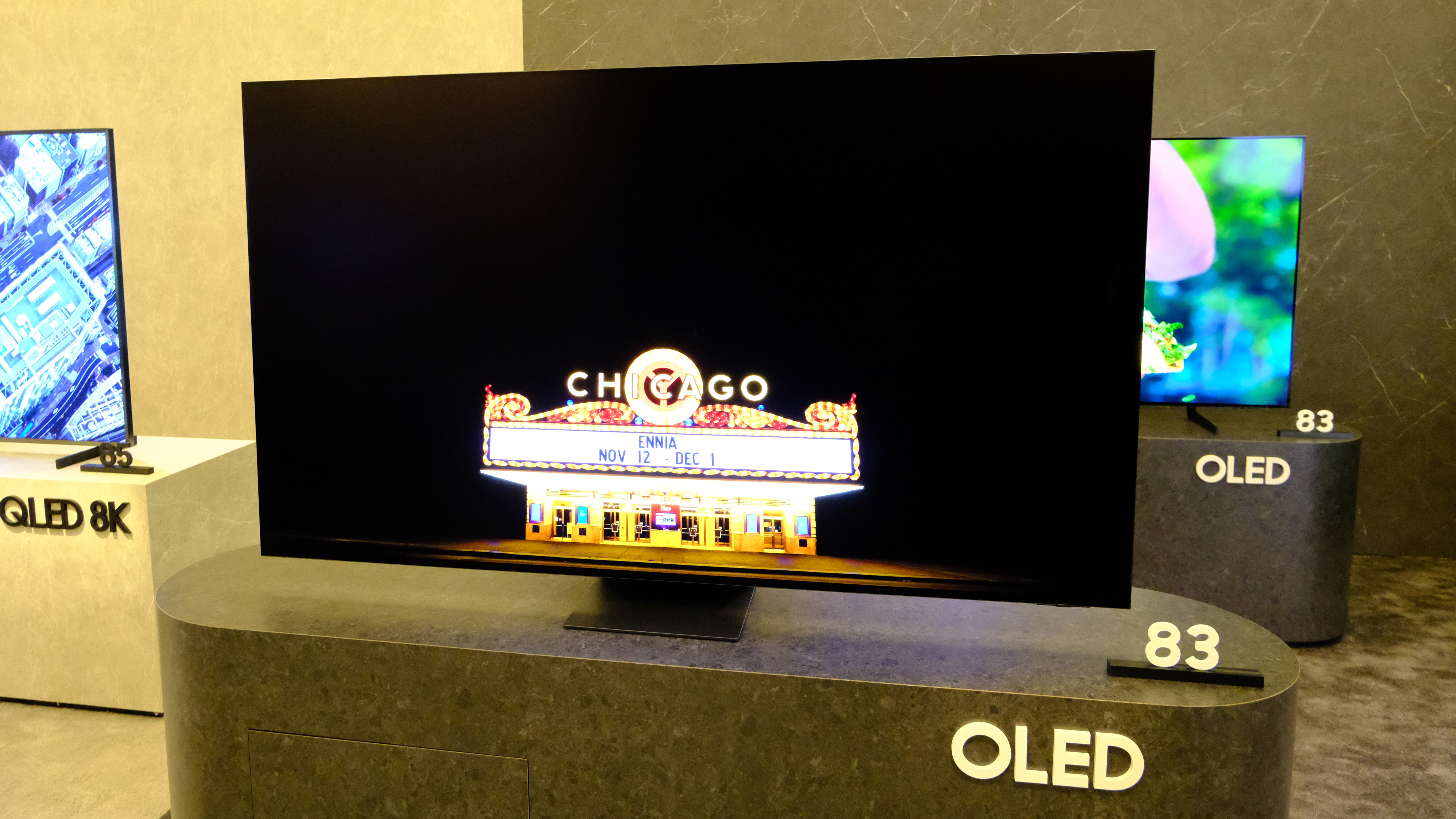
What new OLED TVs are coming soon?
At the start of the year, at the big CES 2025 technology show, we got our first look at the new OLED TVs coming during 2025.
At the start of the year, you should expect new flagship releases from LG and Samsung. The LG G5 will be the first high-end set from LG, and usually releases in spring. The G5 will have a new-gen OLED panel that's brighter than ever, including up to 40% brighter fullscreen images, which will be a great boost – and it comes in a 48-inch size for the first time. The LG C5 mid-range OLED usually follows very shortly after, and we got a brief early look at the C5 at CES. The LG B5 budget TV usually comes a little later, though this year the B5 is only coming in two sizes, sadly.
The Samsung S95F, the successor to the S95D in our list (despite the jump in letters), was also unveiled at CES, and massively impressed us in our first S95F hands-on, thanks to its next-gen anti-reflection tech. This TV also comes in an 83-inch model for the first time – though that size will use a new-gen W-OLED panel (the same as the LG G5) instead of the QD-OLED panel used for the 55-inch, 65-inch and 75-inch sizes. Samsung also announced the S90F mid-range OLED TV, in sizes from 42 inches to 83 inches. Finally Samsung will have a cheaper S85F OLED TV option, which is expected to be less bright. The Samsung S95F is again likely to launch in early spring, with the other models several weeks behind.
Sansui has announced that it will have a budget range of OLED TVs from 55 to 77 inches in the US, which we expect will start from about $800 based on last year's models – that's massively cheaper than the equivalent from LG.
Panasonic announced that it will launch a new range of OLEDs, led by the flagship Panasonic Z95B. We expect this to launch later in the year, as is common for Panasonic's OLEDs. We loved the Z95B when we got to try it at CES, though it will probably be very expensive.
Hisense will have some OLED TV options in some countries, but we're waiting on confirmation of what those TVs will be in terms of size and specs.
We expect Sony to announce new TVs as we get towards spring, and Philips will likely announce new OLED TVs for the UK and Europe also closer to spring.
We don't have any prices or confirmed release dates for these TVs, but we're able to predict the above based on experience with these companies in previous years, and contacts within the industry.
How much do OLED TVs cost?
The cost of OLED TVs varies hugely depending on what technologies are thrown in with an OLED panel, such as the resolution, processor, build quality, built-in speakers, and more. But suffice to say that entry-level models sit around (or, more recently, just under) the $1,000 / £900 / AU$1,500 mark.
More mid-tier OLEDs at larger sizes (65 inches and above) can double that figure, or triple it when you're looking at the cutting-edge high-end panels. You might also notice that you don't get that much of a lower price with the smaller 42-inch sizes of OLED TV – that's because making them so small relies on relatively new tech, so they're not quite such good value per inch.
Sales periods such as Prime Day or Black Friday tend to include lots of discounts on OLED TV models, though – especially from LG and Samsung.
Should I buy OLED or QLED?
OLED isn't the only option for savvy TV buyers. Samsung's competing QLED televisions outperform for brightness, while the introduction of Mini LED backlights has only improved peak light output and overall contrast – the areas that OLED generally has the upper hand with, thanks to its per-pixel brightness control.
It's a tighter race than ever, then, though it's worth assessing secondary characteristics for OLED and QLED screens. An OLED with a cheap processor may cause more artefacts and video noise, while a QLED with edge-lighting won't get the true benefit of its enhanced color and contrast. Format or feature support can be crucial if you're hooking up your TV to a PC, a games console, or a 4K Blu-ray player too.
What is the lifespan of an OLED TV?
According to LG Display, the makers of the OLED panels that go into every OLED TV on the list - around 100,000 hours. For most folks that's about 10 years of TV watching and far exceeds the 40,000 to 60,000-hour lifespans of most LED-LCD TVs. That said, OLED TVs can experience something called burn-in when a static image is left on the screen for prolonged periods of time - so be sure to change the channel every few days.
Best OLED TV competitors: what else is out there?
OLED is, for many, the premium TV tech of the moment. Though once weighed down by inaccessible price points, a flurry of cheaper mid-range OLEDs and smaller panel sizes has helped bring OLED closer to the mass market.
Samsung and Sony's current TV lineups include QD-OLED hybrids (they combine OLED panels with quantum dot tech, utilising the self-emissive properties of the former and color enhancements of the latter) – we have a separate guide to whether you should buy a Samsung OLED TV, if you want to read more about them.
For those with cash to splash, you'll be choosing between a high-end OLED TV and Micro LED – a self-emissive panel technology that Samsung has leant into in recent times, but which has proved difficult to offer either affordably or at mainstream sizing (88-inch is the smallest we've heard about so far, as of 2024).
It's a more complicated picture than simply OLED, then, though for deep blacks and true-to-life color – at a size you can actually get into the average living room – OLED may still be the best choice.
Is burn-in a problem in OLED TVs?
Burn-in, also known as screen burn or permanent image retention, is a visual artefact that sometimes appears when a TV has shown the same thing in the same place for a long time. It definitely happens on some OLED TVs, but manufacturers have come up with lots of ways to minimise the likelihood of it happening to yours.
There are three main ways in which OLED TVs can minimise the likelihood of burn-in. They can use image analysis to identify static images – TV channel logos, for example – and subtly dim them. They can gently shift the image around by a few pixels, something that your OLED probably does already without you noticing it.
And there's a more brute-force approach, where the TV automatically dulls the brightness of the whole display when it detects a bright and potentially burn-in item. That latter one is the least popular because if it isn't implemented well it can be quite dramatic and quite annoying. More modern TVs with this tech, known as ABL (Auto Brightness Limiting) are much more subtle about it than older ones.
Last but not least, you can take the DIY route. The default modes such as Vivid Mode on some TVs can be ridiculously bright, so changing them or using less blazing settings will make your eyes happy and reduce the risk of burn-in even further.
Ultimately burn-in is all about heat, hence the name. And the best way to reduce the risk of it and perhaps eliminate it altogether is to manage heat better in OLED TVs. And manufactures are doing just that. You'll find clever heatsink technology and heat dissipation design in OLEDs from Panasonic, LG, Sony and more.
We're not saying burn-in doesn't exist. It does. But the advances in OLED TV tech in recent years means it's much less of an issue than it was in early OLEDs, and for most of us it's something we don't really need to worry about too much.
Which OLED TVs are best for gaming?
Arguably, all OLED TVs are ideal for gaming as they typically have a fast, 120Hz or higher refresh rate and pixel-level brightness control that helps fast-motion images look solid. Even so, there are differences between the various OLED TVs in this guide that can make them better suited for different gaming scenarios.
High dynamic range support varies among the different TV brands, and that can have an impact on gaming. Samsung TVs, for instance, support the HDR10+ format, but not Dolby Vision. So, if you’re using an Xbox Series X console, you won’t be able to take advantage of its Dolby Vision gaming capabilities when playing on a Samsung TV. LG TVs, in contrast, do have Dolby Vision HDR support, but not the competing HDR10+ format. That’s not as much as an issue for gaming, however, as the availability of games with HDR10+ is very limited compared to Dolby Vision. Panasonic TVs support both the Dolby Vision and HDR10+ formats.
If you’re looking for a maximum 4K 144Hz refresh rate for PC gaming, you’ll find broad support for that feature among the TVs in this guide. In fact, the only TV that doesn’t offer 4K 144Hz support is the LG B4, which maxes out at 4K 120Hz.
The Samsung and LG TVs in this guide each provide four HDMI 2.1 ports with 4K 120Hz pass-through. Having four HDMI ports on a TV used for gaming is important because it allows you to connect both PS5 and Xbox One X gaming consoles and take advantage of their high refresh rate capability while also connecting a soundbar to the TV. Like many other TVs, the Panasonic TV in our guide maxes out at two HDMI 2.1 ports. That’s not so much of an issue in this case, however, since the Panasonic’s excellent built-in speaker system is powerful enough that you don’t necessarily need a soundbar.
How bright are OLED TVs compared to other TVs?
OLED TVs in the past lagged behind QLED TVs with regular LED and mini-LED backlights when it came to brightness. The most recent crop of high-end OLED TVs has changed the game, however, by using new technologies such as QD-OLED (a Samsung-developed tech that combines an OLED display panel with quantum dots which is used in specific Samsung and Sony OLED TVs) and Micro Lens Array (an LG-developed tech combining a layer of microscopic lens elements with an OLED panel that’s used on specific OLED TVs from LG and other brands, including Panasonic).
These new technologies have now made OLED competitive on the brightness front, with new models such as the Samsung S95D and LG G4 delivering peak brightness levels that even exceed some mini-LED TVs, which are typically the brightness champs. The LG G4 and especially the Samsung S95D also use anti-glare screen coatings, which, combined with the TV’s high brightness levels, make them a reasonable option for viewing in well-lit living rooms.
How we test the best OLED TVs
When testing the best OLED TVs, we use the same criteria that we consider in all of our TV reviews, which focuses on picture quality, audio quality, smart TV platform, design, gaming features and value for money. Our testing is not only made up of subjective opinions about each of criteria, but also on objective measurements taken using specialized equipment – you can read our full guide to how we test TVs at TechRadar, or read on for a summary.
Using different AV sources, including broadcast, streaming and Blu-ray, we’ll run in every TV whilst cycling through its picture preset modes, such as Sport, Movie and Standard, to determine which settings are the most accurate for different types of media. We do this to determine what the best settings are for watching movies and TV shows or a sports match for example. Once we have established which picture modes are best suited for different types of content, we then analyze aspects of the display such as its colors, contrast, black levels and more using reference scenes we have specifically chosen to best evaluate these.
When testing an OLED’s picture quality, we’re looking for deep black levels and contrast, which should be better than many other TVs on the market thanks to the screen’s ability to dim individual pixels over local dimming found in LCD TVs – often this is determined by zones and the backlight’s ability. We’ll also look at the color’s vibrancy and punchiness compared to textures and details, particularly sharpness and true-to-life accuracy.
Using lower-resolution sources such as broadcast and DVD, we’ll also test a TV’s upscaling, looking to see how effectively that TV’s processing can enhance lower-res images to be displayed on a larger, 4K screen. During these tests, we also consider the viewing angle from off-center seats, which – again with the OLED panel’s ability to self-dim – should maintain strong contrast levels and picture quality even from the most awkward of viewing positions.
After these subjective tests, we then take specialized equipment — a colorimeter, test pattern generator and Portrait Displays’ Calman calibration software – to perform objective tests and record the results, taking measurements of brightness, color and grayscale accuracy, gamut and more.
The first test we usually do is of the TV’s brightness. Using different sized white window patterns, we measure the the TV’s peak brightness on windows including 10%, which will show the maximum brightness we can expect from the TV itself, and 100% to test full screen brightness, which will demonstrate how the TV can handle consistent levels of brightness across the whole screen (this is key when viewing sports). Full screen brightness also gives an idea of how well a TV will manage reflections.
OLED TVs have often been known to offer lower levels of brightness when compared to QLED and mini-LED. But in recent years, the introduction of OLED EX panels and micro-lens-array (MLA) tech means we expect higher peak brightness levels, but still lower full screen brightness when compared to other LCD panels. We use light controlled environments when testing brightness to make sure any other light sources, environmental or otherwise, does not affect results.
We also test color color reproduction in both SDR and HDR to compare its accuracy when displaying different source materials and the maximum color gamut it can show on screen. We do the same for grayscale as well, testing just how accurately a TV displays gray tones from black to white. With OLED TVs, we expect color accuracy to be among the best in the TV market, along with grayscale.
Gaming is another important aspect of TVs nowadays, so we make sure to test a TV’s gaming performance by analyzing response time, graphics and latency — all of which are areas OLED TVs often excel at. We also look out for features such as a Game Mode (for adjusting a TV’s settings to the most optimum for gaming), 4K 120Hz, VRR and more. We measure response time by using a Leo Bodnar 4K HDMI input lag tester to see what latency is added by a TV’s processing.
We always aim to keep our testing as consistent as possible, but it’s important to note that some of our writers’ setups and testing environments do vary. We do, however, make sure that all tests conducted use the same criteria between all of our writers, also making sure that the equipment is similar enough to achieve the same level of accuracy.
More OLED TVs we've tested
Here's a list of other OLED TVs that we've tested here at TechRadar, but didn't make this list for one reason or another.
Sony Bravia 8: Sony's only 2024 OLED TV, the Bravia 8 impressed us during testing with its lifelike details and vivid colors, thanks to a brightness boost over its predecessor, the Sony A80L, that make HDR images pop. It's also a solid gaming TV with 'perfect for PS5' features and it has brilliant built-in sound. While it's a great TV, it doesn't hit the right price point like the LG C4, but if you want a more mid-range option with sound good enough to not need a soundbar, it's a very strong option, as our full Sony Bravia 8 review really digs into.
Panasonic Z85A: A mid-range OLED TV, the Panasonic Z85A still showcases the superb picture quality we've come to know from Panasonic's OLEDs. Plus, it delivers a good array of gaming features and solid built-in sound. Unfortunately, it has to contend with a crowded mid-range OLED TV market that's dominated by the LG C4, which offers a lot of the same plus points of the Z85A at a much cheaper price, though otherwise our Panasonic Z85A review is pretty glowing.
Philips OLED809: It's no secret that we here at TechRadar adore Philips' OLED TVs, mostly for their unique Ambilight feature; a series of lights around the frame of the TV that project bold colors around and onto the wall behind. The OLED809 delivers excellent picture quality for a mid-range OLED, but is slightly beaten on overall value by the LG C4 – it's also only available to our UK and European readers. Read our Philips OLED809 review if you like the idea of a TV that feels much bigger than it is, though.
Philips OLED909: This is a high-end TV, using the same elite panel as the LG G4, delivering stunningly bright and HDR-rich picture, aided by the Ambilight feature. The built-in Bowers & Wilkins sound system is also a nice addition, adding real meat compared to other built-in TV speakers, and replacing the need for a smaller soundbar. We think the Samsung S95D or LG G4 are a little more versatile and better value for most people, but it's an excellent TV, no question, as our full Philips OLED909 review digs into.
Philips OLED959: This is a truly elite TV, but puts itself in quite a niche bracket by coming in very specific sizing, and with a giant metal stand as part of the package. It's also pricier than the competition – and its 'upgraded' version of Philips' Ambilight tech was too busy for us, and doesn't actually feel like a higher-end version. Still, you get amazing image quality and top-tier built-in sound, so if you like the idea of a freestanding TV with awesome AV skills, it's well worth reading our Philips OLED959 review.
The latest updates to this best OLED TVs guide
March 17, 2025
Added more information about our team in the introduction. Checked all products against our latest reviews, added more information to our list of other OLED TVs we've tested.
February 14, 2025
Added 'Which OLED TVs are best for gaming?' and 'How bright are OLED TVs compared to other TVs?' sections to FAQ.
Read more updates…
January 15, 2025
Added information in the FAQs about the new OLED TVs arriving in 2025.
December 23, 2024
Removed the Samsung S90C due to stock levels. LG C4 became 'best OLED TV overall'. Updated Also Consider list with more OLED TVs we've tested that didn't quite make the list.
November 18, 2024
Replaced the Sony A80L with the Panasonic Z95A as 'best for sound.'
October 24, 2024
Replaced the LG G3 with the LG G4 as 'best for wall mounting'.
September 27, 2024
Replaced the LG B3 with the LG B4 as 'best budget OLED'.
August 2, 2024
Updated the format of this guide to offer more information about the merits of each TV's different strengths and weaknesses, with personal insight from our reviewers.
July 4 2024
Added 'Also consider' section with details on forthcoming new OLED TVs and carryover models in 2024.
June 7 2024
Swapped the LG C3 for the LG C4 as the #best for sizes'. The LG C3 is cheaper than the C4 after discounts, but the C4 has had several brightness and processing improvements that make it worth its price.
May 10 2024
Swapped Samsung S95C for Samsung S95D as the 'Best premium OLED', based on our review. The S95C is cheaper than the new model after price drops, but because it's still high-priced, and the S95D has the new anti-glare screen, we think the model is worth paying up for.
April 11 2024
Rewrote introduction and updated information throughout to ensure all advice is up-to-date.
March 14 2024
Added graphs with data from our testing to each TV's write-up, to make it easy to read and compare that information.
March 6 2024
Expanded the How We Test section with more in-depth information on how testing procedure works and what tests are carried out.
February 5 2024
Replaced the LG A2 with the LG B3 as 'best budget OLED TV.'
January 5 2023
Added the LG G3 as the 'best OLED TV for wall mounting' due to its high review score and special wall-mount bracket.
December 21 2023
Removed the Sony A95K and 'best for picture quality' category. Changed Samsung S95C from 'Brightest OLED' to 'Best premium OLED'.
November 21 2023
Checked all products against our latest reviews to ensure we're happy with the list (we are). Added a link to our Black Friday OLED TV guide.
October 19 2023
Updated the product lists to make the Samsung S90C our number one pick, reflecting our reviews. Added the LG B3 as the best cheaper gaming OLED.
September 21 2023
Added more buying advice for each model.
August 18 2023
Confirmed all links to ensure availability of models in list.
June 26 2023
Added this 'latest updates' section, to help readers see what recent changes have been made. Checked the products in the list against our latest reviews.
Get daily insight, inspiration and deals in your inbox
Sign up for breaking news, reviews, opinion, top tech deals, and more.

Matt is TechRadar's Managing Editor for Entertainment, meaning he's in charge of persuading our team of writers and reviewers to watch the latest TV shows and movies on gorgeous TVs and listen to fantastic speakers and headphones. It's a tough task, as you can imagine. Matt has over a decade of experience in tech publishing, and previously ran the TV & audio coverage for our colleagues at T3.com, and before that he edited T3 magazine. During his career, he's also contributed to places as varied as Creative Bloq, PC Gamer, PetsRadar, MacLife, and Edge. TV and movie nerdism is his speciality, and he goes to the cinema three times a week. He's always happy to explain the virtues of Dolby Vision over a drink, but he might need to use props, like he's explaining the offside rule.
- James DavidsonTV Hardware Staff Writer, Home Entertainment